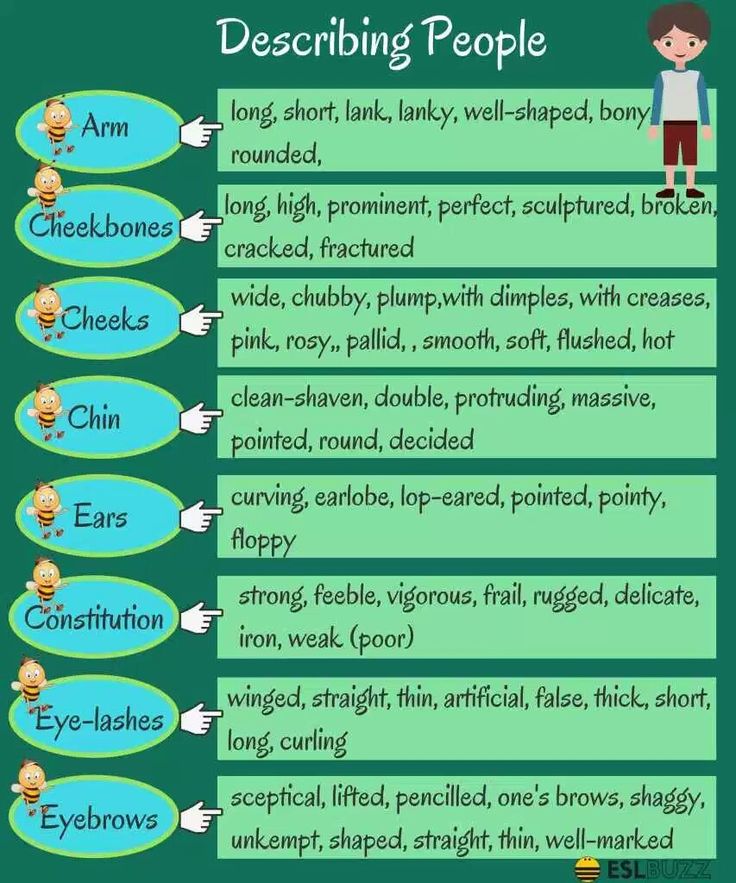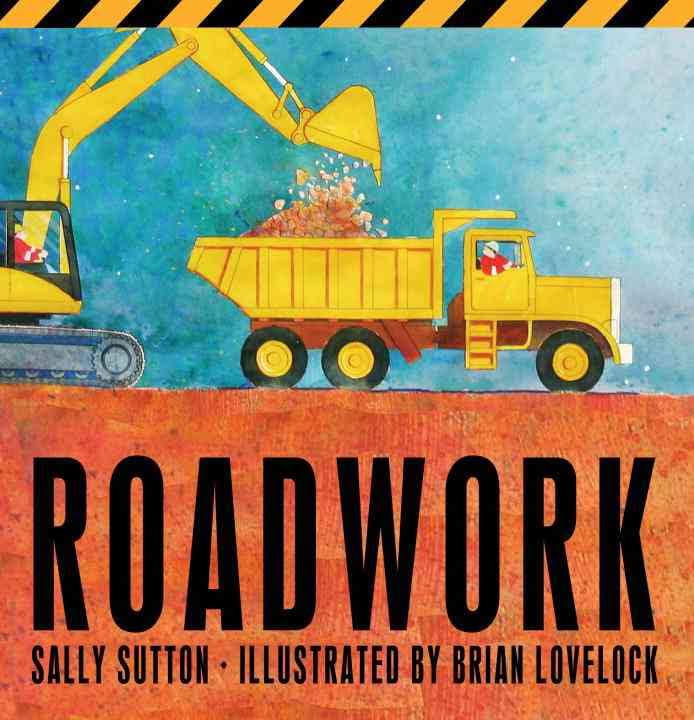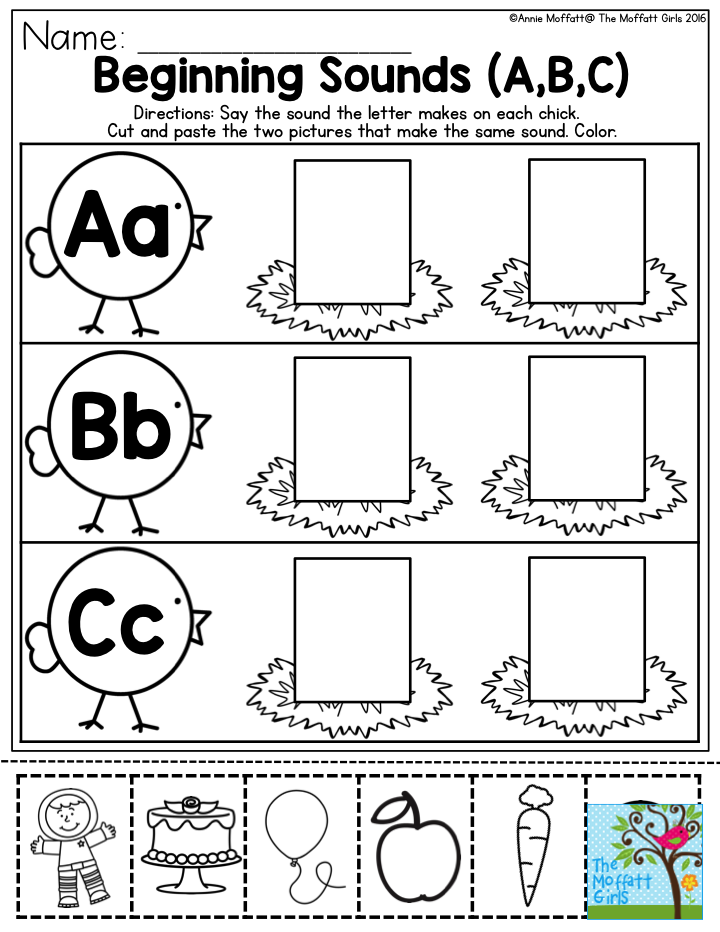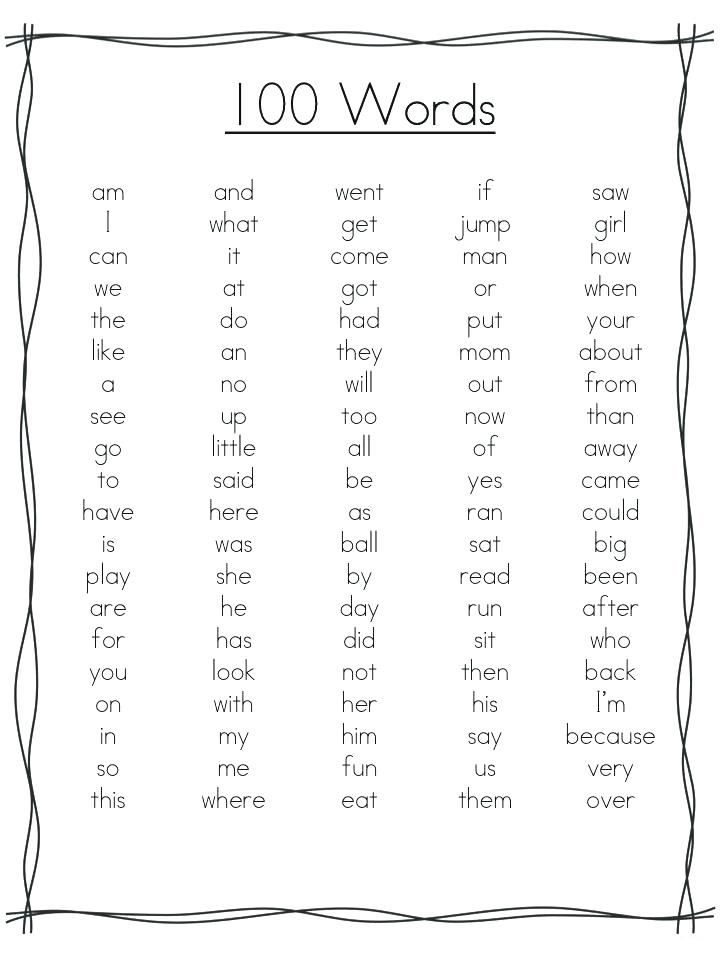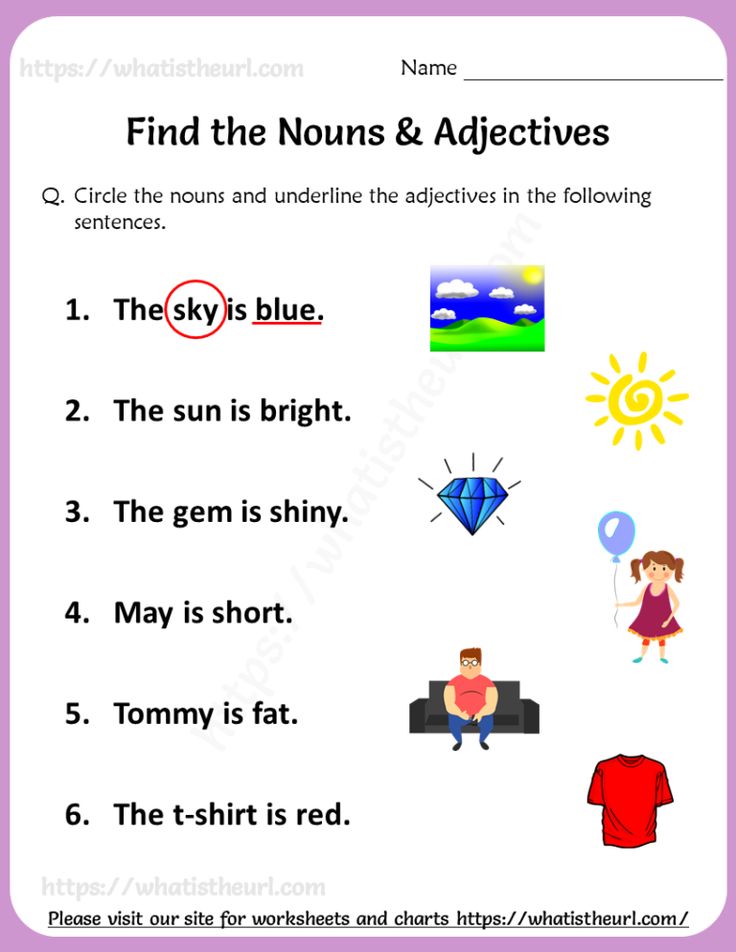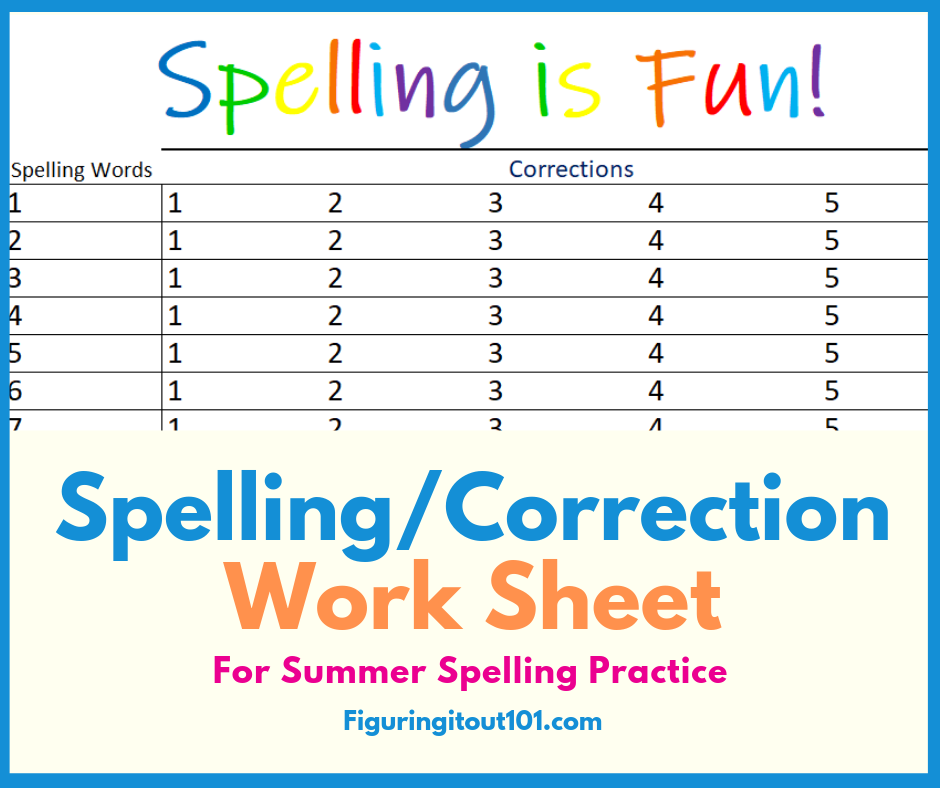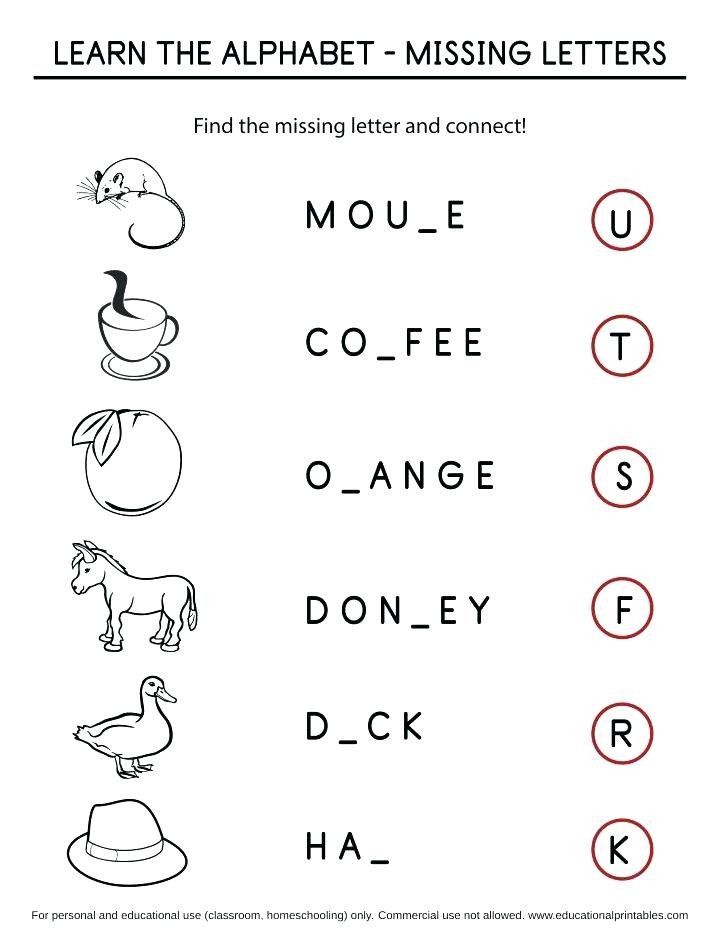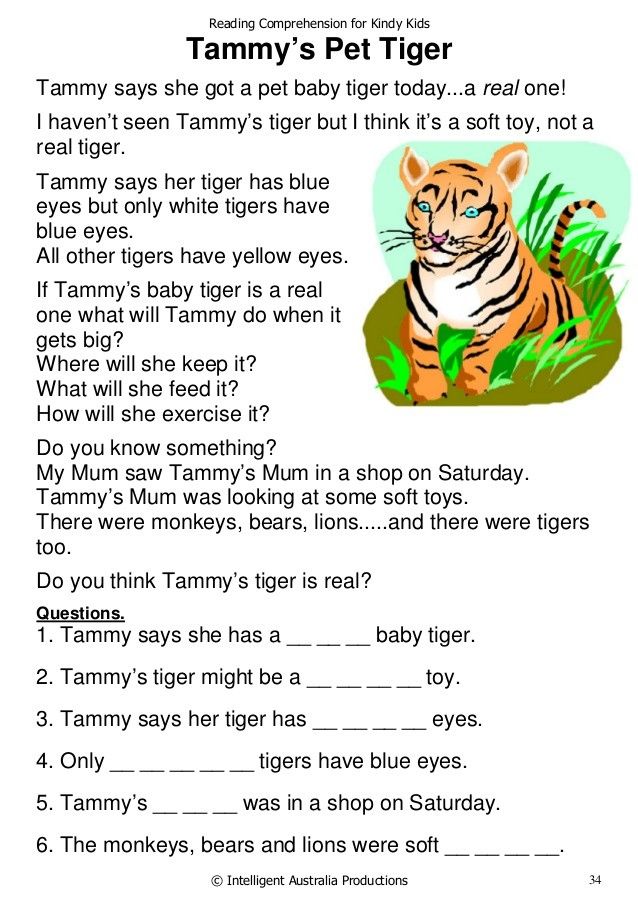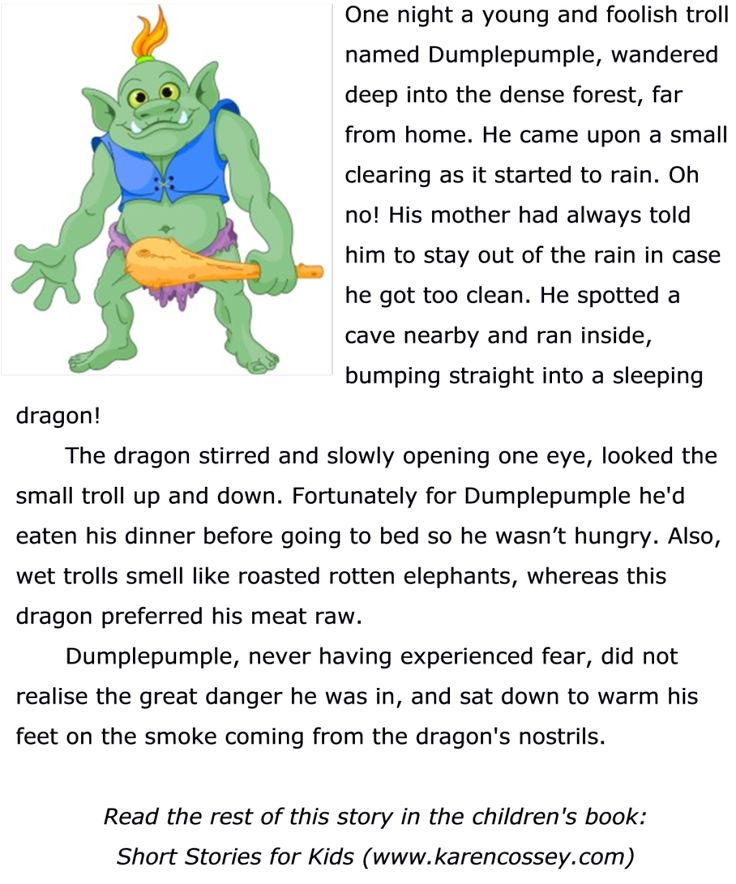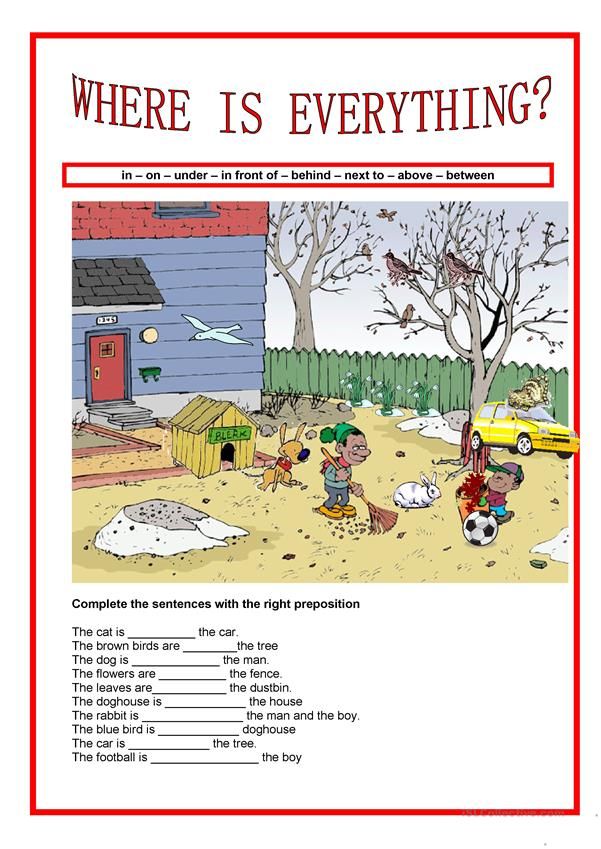Learning about adjectives
What is an adjective? Learn about adjectives with EasyBib's guide.
Share to Google Classroom
3.9
(20)
With its multiple types, forms and rules of use, the adjective can be a slippery element of language to master. Get a firm grip on it, however, and you’ll be rewarded with the power to elevate your work to a more engaging, interesting and expressive level.
Adjectives are words that modify (describe) nouns. Adjectives give the reader more specific information about an object’s color, size, shape, material, and more. This guide will help you understand their function so you can use them effectively in your essays and papers.
Additionally, EasyBib Plus’s easy grammar check solution can help improve your essays. With a subscription, you can upload your paper to check for structural or grammatical errors and receive suggestions that may help improve your writing style. It can also check for unintentional plagiarism, help you to cite sources, and generate MLA or APA format citations.
If you need to create citations in a different format, our library of resources contains free guides for many more styles.
For information on the structural role these modifiers play in a sentence, you may find this further reading helpful.
Guide Overview
- What is an adjective?
- Types of adjectives
- Which comes first?
- Why they’ll never be lonely
- The unspoken order
- If in doubt, take it out!
- What can an adjective add?
- The wonder word
- Flip reverse with adjectival opposites
- Cool, cooler or the coolest?
- A master of disguise
- Unusual adjective examples
- Still struggling?
What is an Adjective?
As a child, you might have learned that it is a describing word. This adjective definition is correct and, as mentioned above, it can be used to describe, modify or qualify a noun, essentially giving more information about the object, person, place, thing or idea in question.
In its most basic form, it is a single word. However, as the English language is anything but basic, you’ll also want to understand the adjectival clause and phrase—more on those later!
When used well, this essential part of the English language can become your most potent writing ally. They’ll make your writing more specific and lucid, enabling you to convey your ideas in a clear and appealing manner. They add the meat to the bare bones of a sentence!
Struggling with writing in general? Our grammar checker, that comes with EasyBib Plus, can help. You’ll also find lots of additional free resources at EasyBib.com too, including guides for Chicago/Turabian, APA and MLA format. It’s an easy, one-stop online toolkit that can help you understand tricky topics, such as creating an MLA citation for a website or citing an image found online, to make sure that the work you’re handing in for marking doesn’t contain avoidable mistakes that could let you down.
Types of Adjectives
When it comes to learning the different types, some are more interesting than others—however, there’s no picking and choosing with grammar! Let’s take a look at both the fun and the functional, and the part they each play in the English language.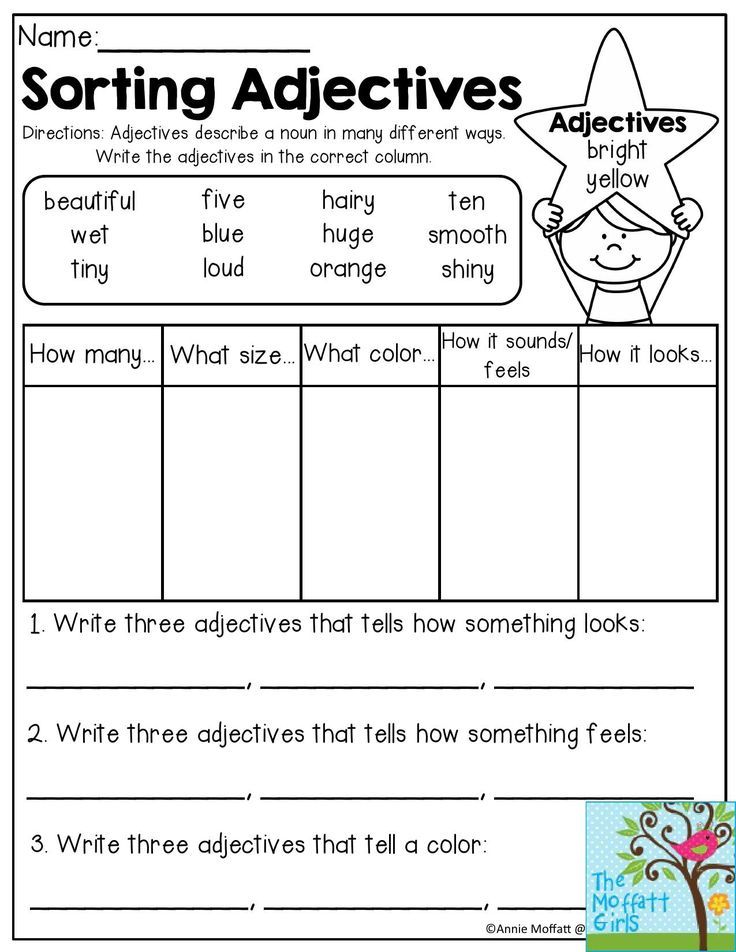
The Exciting
Descriptive adjectives are the grammatical icing on the cake or bubbles in the bathwater. They follow the classic adjective definition of a descriptive word that comes before or after a noun to modify it. Often, you can take them away and the sentence will still technically make sense, although it’s likely to be less informative, thought-provoking, and engaging for the reader.
For example:
The woman was wearing a dress.
vs
The beautiful woman was wearing a long, white dress.
When it comes before a noun it is known as an attributive adjective.
When it comes after a noun it is known as a predicate adjective. Note that these usually follow a linking verb.
For example:
- Attributive — the beautiful woman
- Predicate (also known as predicative) — the woman looked beautiful
To learn more click here or check your paper with EasyBib Plus’s paper checker to ensure that you’re using different aspects of language, including spelling, punctuation, style and word choice, correctly.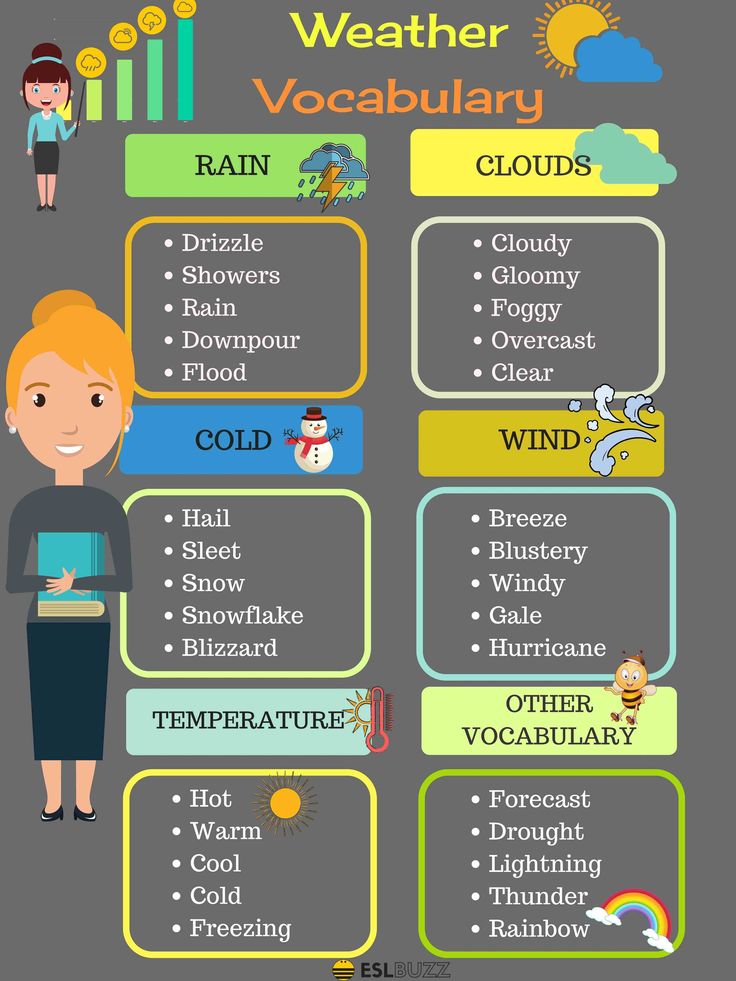 Otherwise, let’s continue on our exploration of describing words.
Otherwise, let’s continue on our exploration of describing words.
Did you know that describing words can also be subjective or objective?
Objective: A descriptor, based in fact, that will often be quantifiable and measurable. Descriptors of age, color, pattern, size, shape, condition, type, purpose, origin and material are objective. For example: old, red, checked, large, square, clean, four-sided, running (to indicate purpose, e.g., running shoes), French and paper.
Subjective: These words provide opinion-based descriptions which may be open to interpretation. It could be an ‘in the eye of the beholder’ descriptor such as beautiful or ugly. Or it could describe a relative measure such as cheap, best, favorite or cold. Words used to describe an emotion or feeling such as happy or hungry are also subjective.
There are multiple objective and subjective sub-types, so you should be spoiled for choice when choosing that perfect describing word.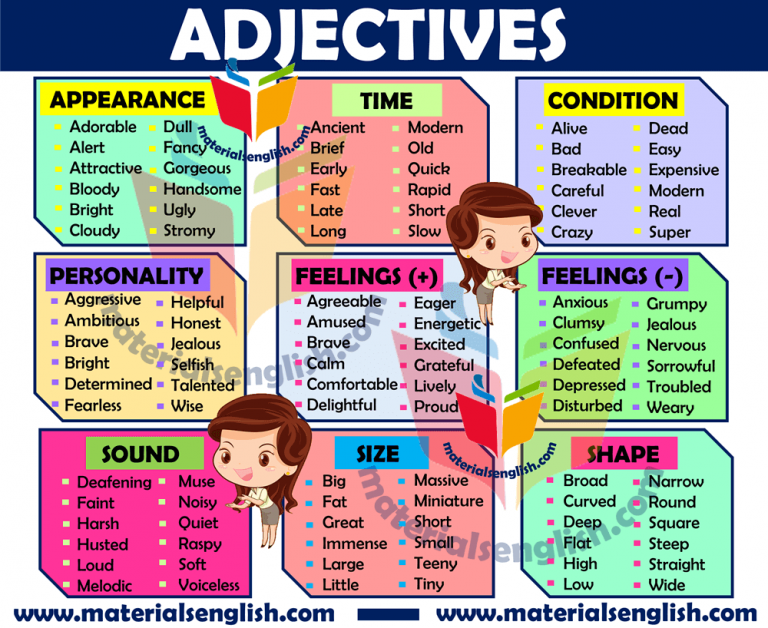 Find a list of adjectives and the order they should follow further down.
Find a list of adjectives and the order they should follow further down.
The Essential
Words in this category are more likely to modify (or give information about) a noun than describe it. Take them away, and you’ll often find that you no longer have a fully formed sentence. These are the ‘toothbrush in the bathroom words’—nothing about them is exciting, but they perform an essential function, we use them daily, and we’d be lost without them.
Take articles. They always come before the noun they’re indicating. There are three articles in the English language: a, an, and the. A and an are used to denote non-specific things, while the indicates something specific. The is known as the definite article, while a and an are indefinite articles.
For example:
Pass me the book
The word the tells us that the request is for a specific book.
Pass me a book.
A, however, shows that any book will do.
Demonstrative: Similar to the definite article in that they indicate specific things. For example: these, those, this and that.
Indefinite: Similar to the indefinite article in that they indicate non-specific things. For example: any, many, several and few.
Interrogative: Used to ask questions. There are three in the English language: which, whatand whose.
Possessive: Indicate that a thing belongs to someone. My, your, his, and our are examples of a possessive adjective.
Numerical: Answer the question “how many?” in a sentence. For example:
She ate six cupcakes.
Which Comes First?
We’ve answered the question, ‘what is an adjective?’.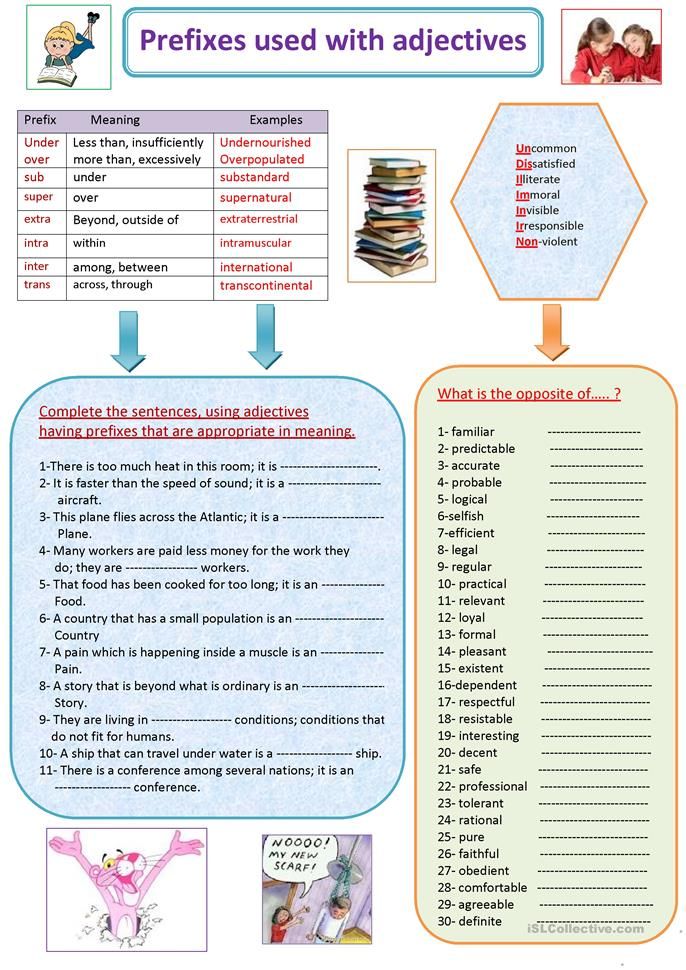 Now let’s look at where they sit in a sentence. Typically, a describing word is a pre-modifier, this means that it comes before the noun, pronoun or the noun phrase that it’s looking to modify. Also known as a prepositive (NOT a preposition, that’s different!) or, as previously mentioned, attributive.
Now let’s look at where they sit in a sentence. Typically, a describing word is a pre-modifier, this means that it comes before the noun, pronoun or the noun phrase that it’s looking to modify. Also known as a prepositive (NOT a preposition, that’s different!) or, as previously mentioned, attributive.
For example:
A lovely day
In the case of an indefinite pronoun (someone, something, anybody), however, the descriptor comes after.
For example:
Something blue
We’ve also mentioned predicatives that come after the noun they modify and follow a linking verb.
For example:
The sky looked blue.
Why They’ll Never Be Lonely
Although a describing word will always be singular (even if the noun is plural), it will never be lonely—it will always team up with a noun or pronoun in a sentence.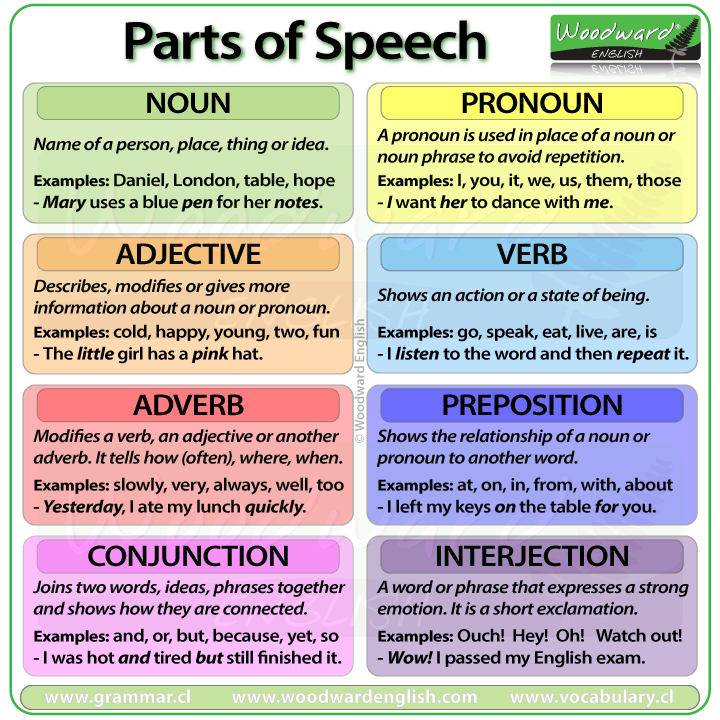
The adjective phrase is a phrase that performs the describing or modifying function in a sentence. It can be a string of describing words or it can be an intensifier plus descriptor.
String example:
It was a cold but sunny day.
Intensifier example:
She was very happy.
Coordinates
When one just isn’t enough you can use coordinate adjectives separated by a comma or commas. These are a perfect pairing—or trio or full-on gang—of words used to describe or modify a single noun.
For example:
A long, white, lacy dress
Long, white and lacy are coordinates: they are adjectives with a parallel function in describing the dress, and none carries more weight than the others. You can test this by replacing a comma with a conjunction, such as and or but, and checking if the sentence still makes sense.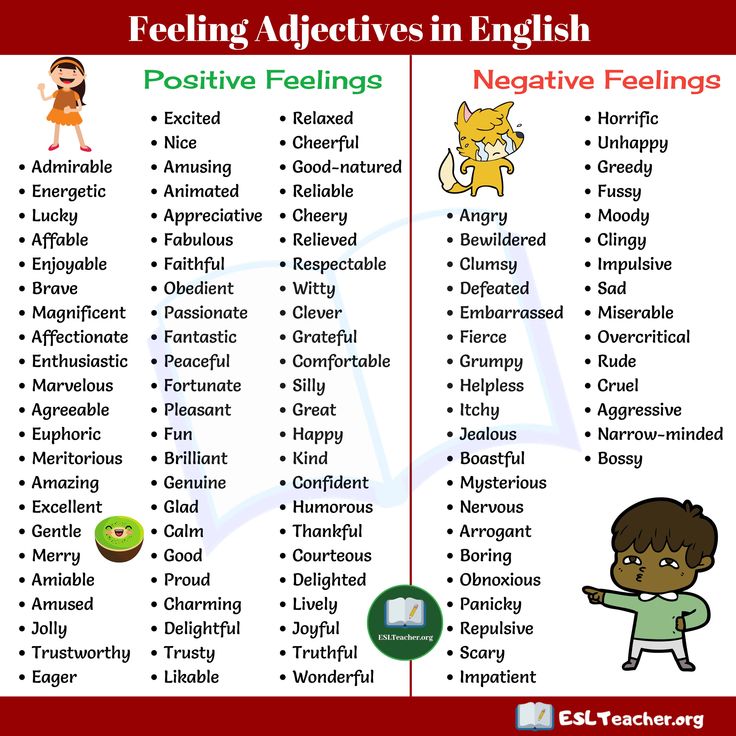
For example:
A long and white and lacy dress
A beautiful but expensive dress
Non-Coordinates
In some sentences, however, replacing the commas with conjunctions yields a sentence that no longer makes sense. When this occurs, the describing words are non-coordinate.
If one word holds more weight than the other, they are non-coordinate—also known as cumulative. Another easy way to test this is to switch the words around to see if the sentence still makes sense.
For example:
My two red skirts were in the laundry.
My two and red skirts were in the laundry.
My red two skirts were in the laundry.
Non-coordinates don’t need to be separated by a comma.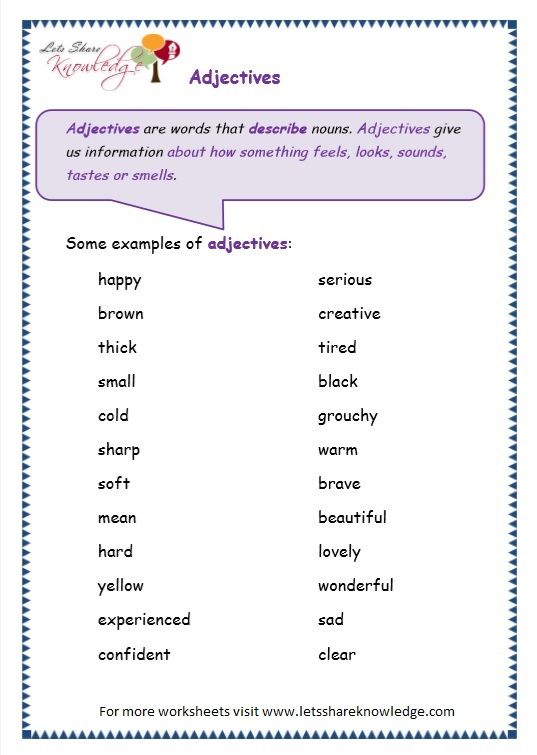
The Unspoken Order (mess with this at your peril!)
Native English speakers intuitively follow a particular order when using describing words in a sentence. Intriguingly, many of us aren’t even aware that there is an order, let alone that we’re complying with it.
For those learning English as a foreign language, however, it’s a bit of an uphill battle. To help make sense of it, the following list of adjectives follows the order used when forming sentences:
- Determiner — a, an, the, that, some, six
- Opinion — beautiful, easy, expensive, happy, angry, boring, strange
- Size — large, small, tiny, deep, medium
- Condition/Physical Quality — broken, cold, smooth, rich, poor, sharp, slow, heavy, light
- Age — new, old, seven-year-old, modern, antique
- Shape — round, square, oval, flat
- Color — red, blue, monochrome, bright, dull
- Pattern — striped, spotty, flowery, chevron, plaid
- Origin — American, French, English, public, private
- Material — gold, silver, cotton, silk, wooden
- Type — general, four-sided, wireless
- Purpose/Qualifier — sleeping, frying, hunting, swimming
- Noun — bag, pan, hat, pool, woman, house
For example:
- That is a beautiful American house.
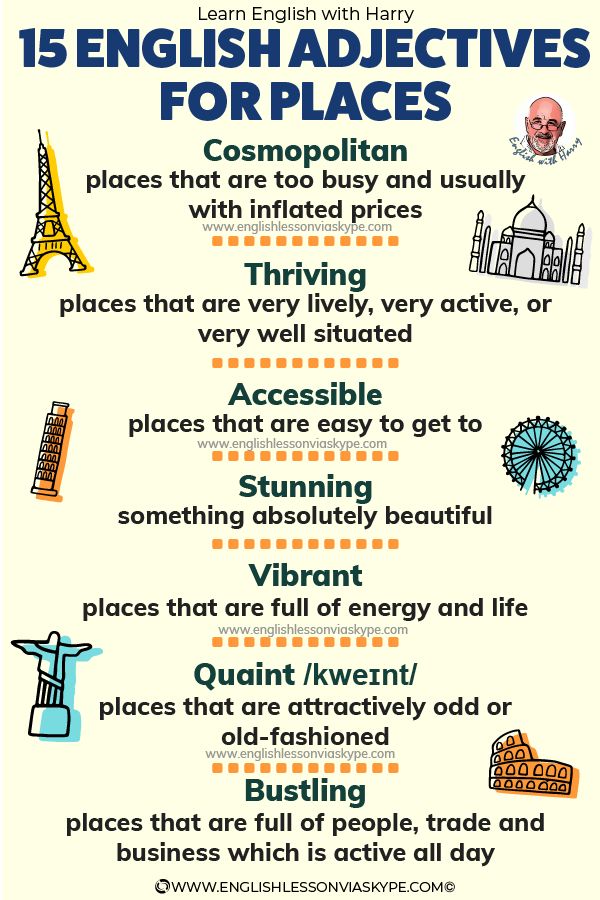 (opinion + origin + noun)
(opinion + origin + noun) - It’s a tiny silver ring. (size + material + noun)
- I love smooth, round pebbles. (condition + shape + noun)
Note, however, that the order isn’t entirely set in stone. For example, you might find a list of adjectives that places shape before age.
More resources on this can be found online, including handy downloadable charts. You can also check your word choice, grammar and punctuation with EasyBib Plus.
If in Doubt, Take it Out!
Just because you can use several words to modify one noun doesn’t mean that you should. No one wants their work to be described as ‘wordy’ or ‘flowery’!
Exercise restraint with subjective descriptors like lovely, interesting and beautiful. The ‘show don’t tell’ rule is an oldie but a goodie—rather than telling your reader that something is beautiful, show them what makes it so and trust that they’ll reach the same conclusion.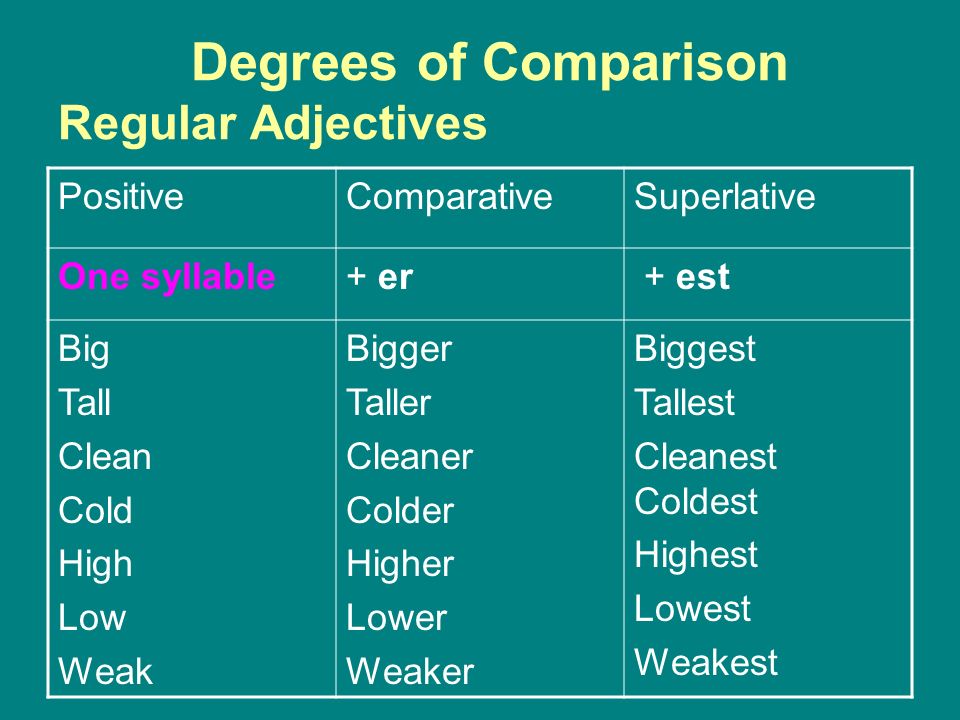
What Can an Adjective Add?
When you’ve finished trying to say that tongue twister ten times fast, let’s look at what the right word can add to a sentence.
- Opinion — a beautiful dress
- Relative information — a huge house
- Factual information — a red car
- Detail — a shiny floor
- Context — old toys
- Purpose — the dining table
- Character traits — a patient teacher
The Wonder Word
To define adjective solely as a describing word may, arguably, do it a disservice. Used correctly, it’s one of the most capable tools of the English language.
In addition to providing us with the super functional determiners (a, her, those, that, some,etc. ), they can also: clarify and articulate information; alter the meaning or context of a sentence; and turn tedious, flat tales into riveting, page-turning prose.
), they can also: clarify and articulate information; alter the meaning or context of a sentence; and turn tedious, flat tales into riveting, page-turning prose.
Here are some examples:
Alter the Meaning of a Sentence
Original:
The woman was wearing a dress.
Revised:
The woman was wearing a long, white wedding dress.
The words long, white and wedding add meaning and clarity in the revised sentence. You could even take away the word wedding and the connotations of a ‘long white dress’ would still remain.
Alter the Context of a Sentence
Original:
The girl was playing with old, broken toys.
Revised:
The girl was playing with shiny, new toys.
These two sentences paint very different pictures, by merely changing the modifiers.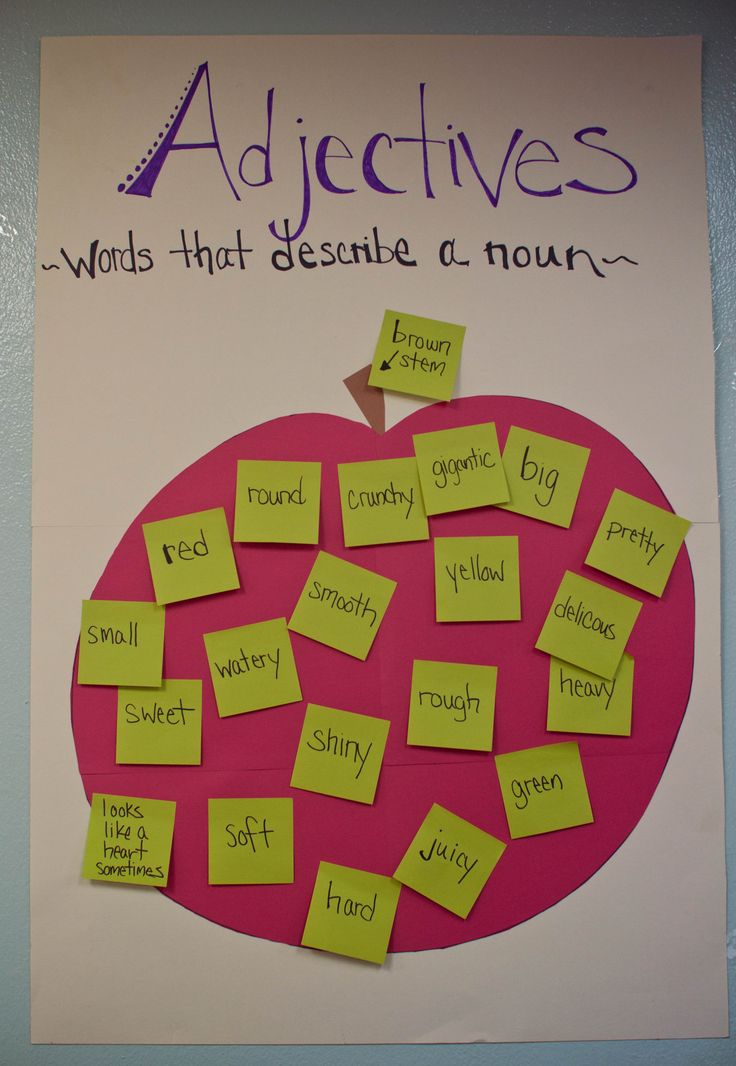 If they were the first line of a story, they’d instantly conjure very different assumptions and set different moods.
If they were the first line of a story, they’d instantly conjure very different assumptions and set different moods.
Convey Information
Original:
John opened the door to his apartment.
Revised:
John opened the door to his expensive, new apartment.
Transform Dull Prose
Original:
John opened the door to the house.
Revised:
A nervous John opened the heavy, creaking door to the spooky, old house.
These wonder words have the power to change the impact of a sentence entirely!
Need more information on a determiner? Check out our determiner page from EasyBib Plus.
Flip Reverse With Adjectival Opposites
These words are masters of transformation, and you’ll see one of their most impressive tricks when you employ them to achieve the opposite meaning or, to add a degree of negativity.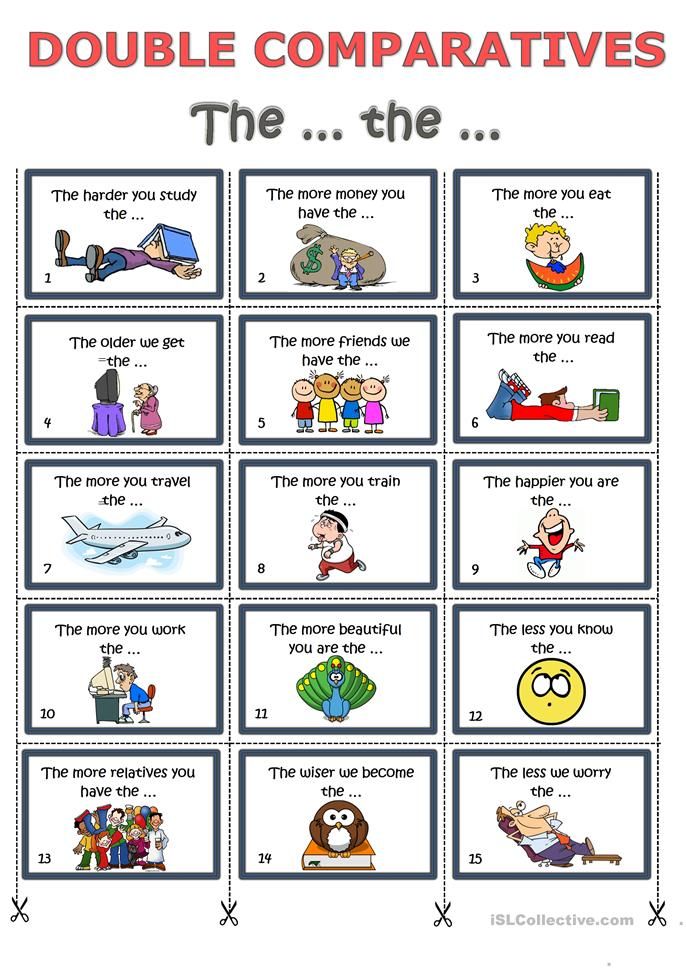
For example:
- Positive — my favorite show
- Negative — my least favorite show
- Positive — my teacher is patient
- Negative — my teacher is not patient
Interestingly, you can convey a scale of meaning with this method.
My art teacher is less patient than my music teacher.
Prefixes can also be used to achieve the same result.
For example:
- Patient — impatient
- Alcoholic — non-alcoholic
- Kind — unkind
Cool, Cooler or the Coolest?
Not content to present themselves in only one form, the not-so-humble adjectives can also be used to compare two or more nouns. Adjectives have three degrees of comparison: positive, comparative, and superlative.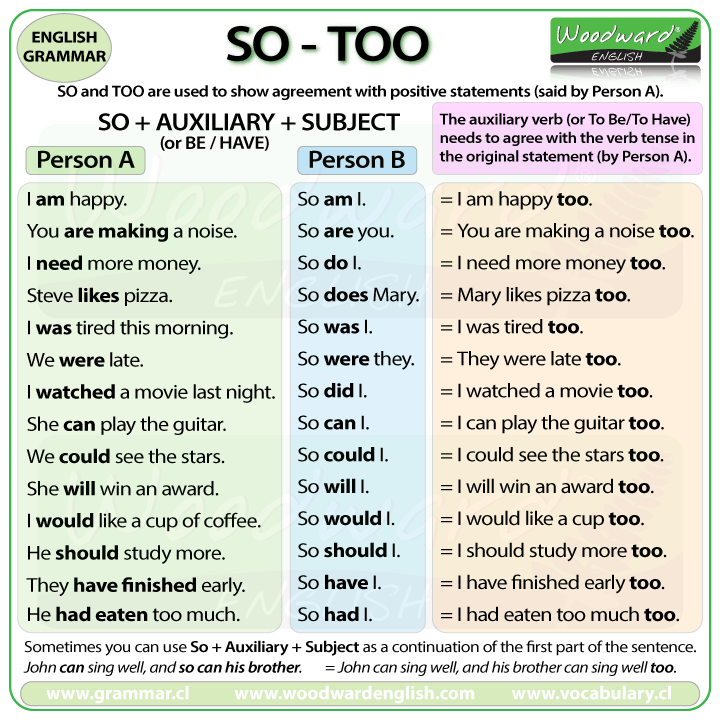
Positive/Absolute: This is the standard base form of the word. Positive adjectives don’t compare anything. These include words such as sunny, messy, and great, which describe an object in its own right. Other examples are: red, hot, angry.
Comparative: Comparative adjectives compare two or more objects by degree. Adjectives such as sunnier, messier, and greater are comparative.
Most adjectives can be made comparative by adding –er or –ier to the end. You may also need to double the final consonants. For example: Big, bigger, biggest.
In some cases, adjectives must be preceded by comparative terms like more or less. For example: more interesting, less intelligent.
Superlative: Superlative adjectives indicate that a noun has the highest degree of the quality being described. Examples include sunniest, messiest, and greatest.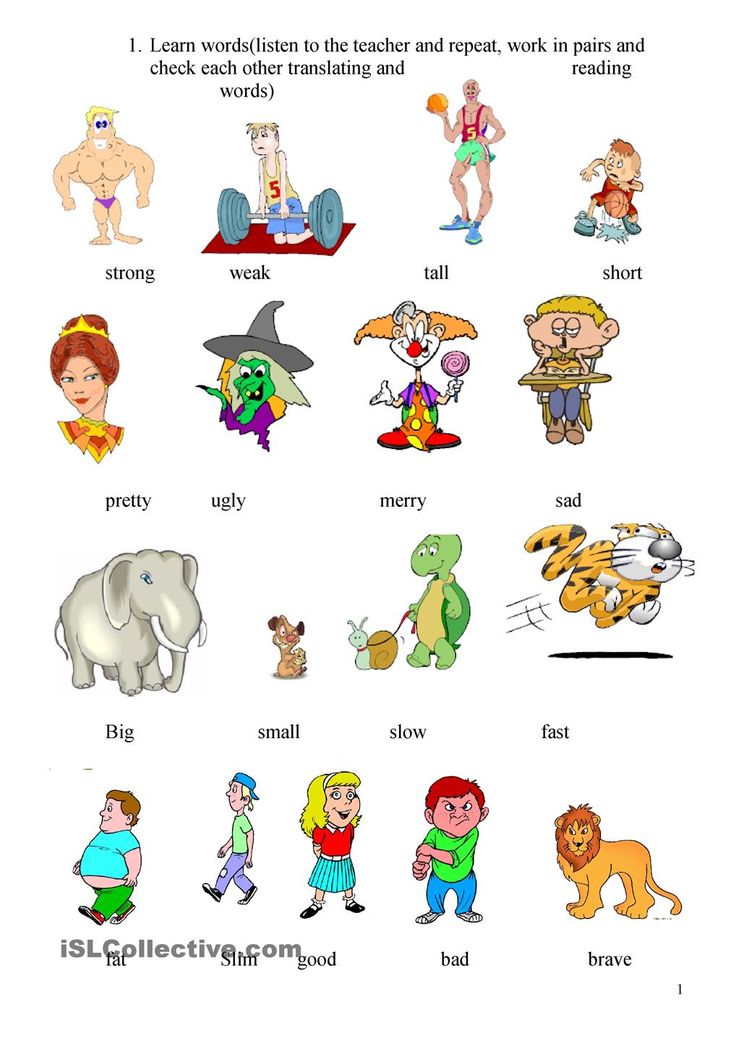
You can typically make adjectives superlative by adding –est or –iest. Some adjectives, however, must be preceded by most to become superlative.
Irregulars: As seen in the examples above, most degrees of comparison can be formed by adding:
- er and est — bright, brighter, brightest
- r and st — brave, braver, bravest
- Removing the y and adding ier and iest — dry, drier, driest
- By adding words such as more and most
Some, however, don’t like to follow the rules. These words, known as irregulars, express degrees of comparison with sometimes drastic changes in form.
For example:
- Little, less, least
- Bad, worse, worst
Forming comparatives or superlatives of words that already express an extreme of comparison is also a sticky subject.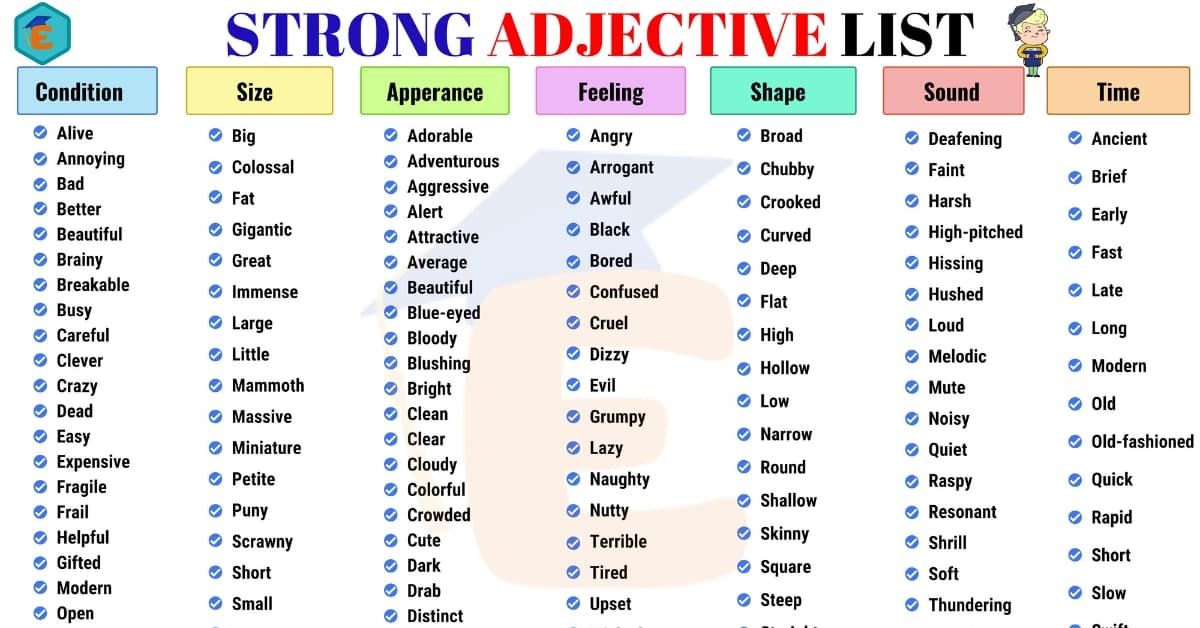
If something is already perfect, can it be more perfect or the most perfect? There’s a puzzle for the language philosophers among you!
To learn more about and other parts of speech, review our grammar quick guide.
A Master of Disguise
Now here’s where things can get really tricky! Grammar is full of sneaky double agents—a verb or a noun can become a describing word, and a describing word can become a noun or an adverb. Confused? Let’s break it down.
Noun as a Descriptor
Sometimes a noun is used to describe another noun. The first noun then functions as the descriptor.
For example:
- Thing — a bar of gold
- Descriptor — a gold necklace
- Thing — basketball
- Descriptor — a basketball player
Compound Nouns
In some cases these then become compound nouns, which are recognized as single words because they need both words to convey their meaning accurately.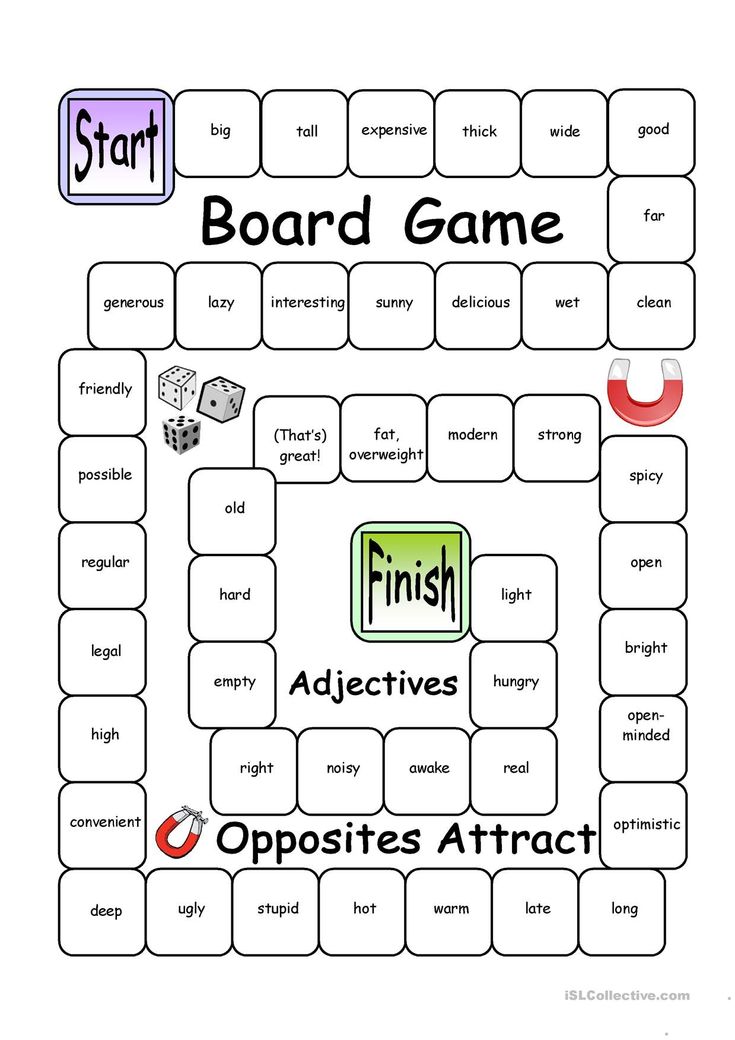
For example:
- Thing — wedding
- Descriptor — wedding dress — the word wedding modifies the noun dress.
- Compound Noun — wedding dress
Compound nouns can also be formed from a descriptor plus noun or a descriptor plus verb.
For example:
- red-head
- soft-ball
- dry-cleaning
- public-speaking
Participles
A participle is a word that has been formed from a verb but functions as a describing word.
For example:
- Verb — to run
- Participle — running water — the word running modifies the noun water.
Nominals
Nominals precede a describing word with the and function as nouns.
For example:
- Descriptor — the best singer
- Nominal — the best is yet to come
You’ll notice that the word best is not modifying a noun in this sentence.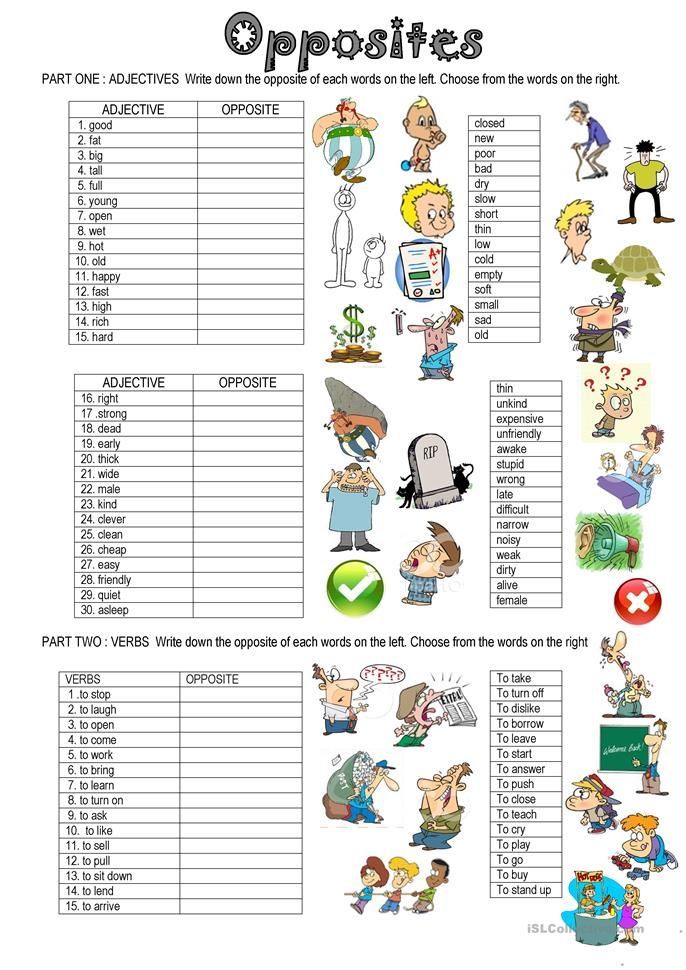 Instead it is acting as the noun.
Instead it is acting as the noun.
Collectives
Collectives are a sub-type of nominals that refer to a group sharing a certain characteristic.
For example:
- Descriptor — the old man
- Collective — the old may suffer health problems
Again, the old is acting as a noun to identify a group of people.
Flat Adverbs
A flat adverb doesn’t have the distinctive ‘ly’ on the end of it, which allows it a double function as both adjectives and adverbs.
For example:
- the fast car
- he drove fast
The Adjective Clause
This clause functions as a descriptor in a sentence, and includes a verb and a subject. It always begins with a relative pronoun (who, whom, which, whichever, that, etc) or a relative adverb (where, when, why).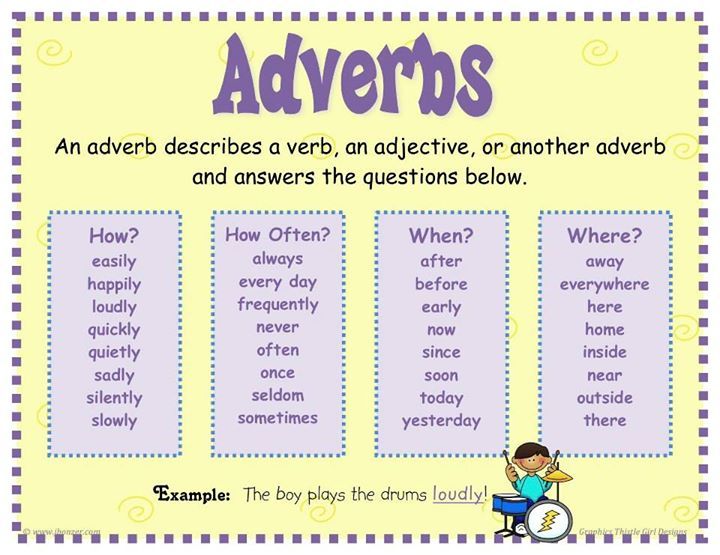 It’s a dependent clause, which means that it cannot stand alone as a sentence.
It’s a dependent clause, which means that it cannot stand alone as a sentence.
For example:
The jacket that Todd bought yesterday looked smart.
Notice that a descriptive clause doesn’t even have to contain a describing word—go figure!
Unusual Adjective Examples
If you’re still struggling with the question ‘what is an adjective?”, seeing examples may help! Or are you searching for a wonder-word that’s sure to impress your lecturer? Our unusual adjectives list might have the inspiration you need.
Adjectives That Start With A
- Abhorrent — offensive
- Abject — unfortunate
- Adamant — unyielding
- Adroit — skilful, clever
- Auspicious — lucky
Adjectives Starting With D
- Decrepit — worn out, ruined
- Dapper — smart dress and mannerisms
- Decorous — good manners and conduct
- Didactic — instructive
- Draconian — harsh
Adjectives That Start With E
- Effulgent — radiant
- Efficacious — having a striking effect
- Equanimous — balanced, calm
- Erratic — prone to sudden change
- Execrable — detestable, very bad
Adjectives That Start With N
- Nebulous — vague, lacking definition
- Necessitous — poor and needy
- Nescient — ignorant
- Nefarious — wicked
- Noxious — harmful, corrosive
Adjectives Starting With P
- Parsimonious — frugal
- Pernicious — harmful, deadly
- Piquant — stimulates taste or mind
- Plucky — brave
- Precipitate — steep, sudden, hasty
Adjectives That Start With U
- Ubiquitous — everywhere at once
- Unvanquishable — invincible, unbeatable
- Uppity — self-important
- Urbane — courteous
- Utilitarian — useful, practical
A thesaurus is your friend! Use one to find an adjective list and stop using the same tired words over and over.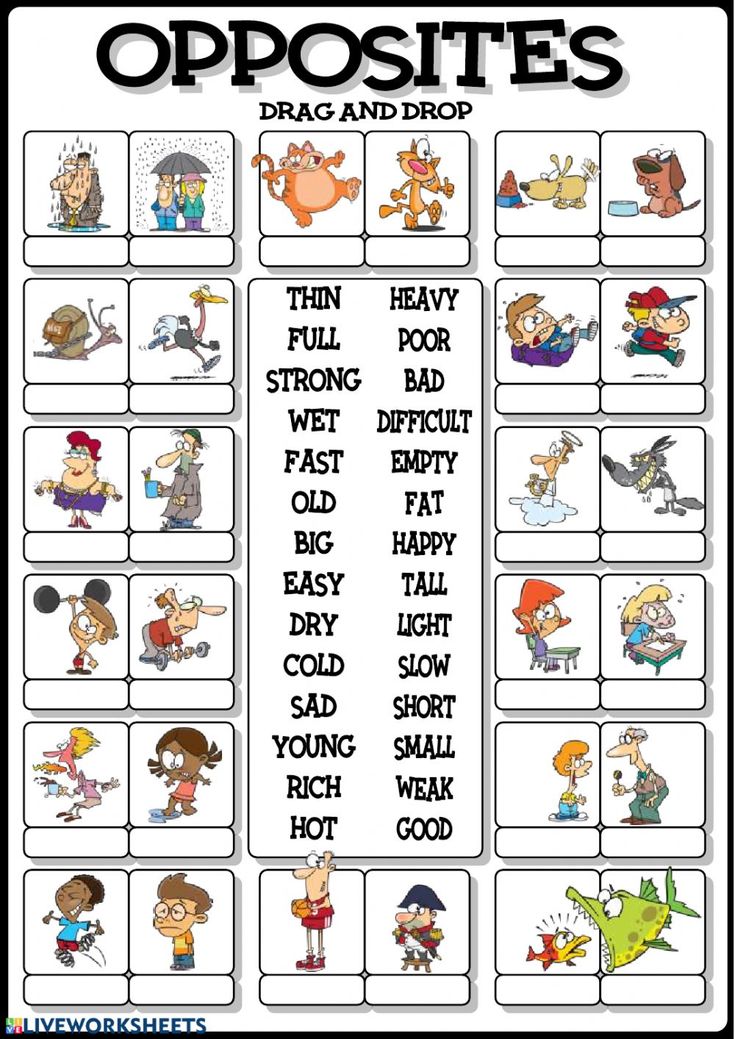 You can also check your word choice using EasyBib.
You can also check your word choice using EasyBib.
Still Struggling?
If you don’t have adjectives 100% nailed down just yet, or are still finding it difficult to answer the question ‘what are adjectives?’, don’t worry. Grammar is one of the most challenging aspects of the English language to learn, and it’s a long road to mastery. This guide is here to help you along your way, along with others such as our research paper and interjection pages.
An EasyBib Plus subscription comes with a useful online tool for checking grammar. If you want to try it before subscribing, simply upload your paper or essay for a free review with up to 5 grammar suggestions. An EasyBib Plus subscription also allows you to check for information that may need a citation, and offers tools and resources to help you create an MLA annotated bibliography, MLA works cited, and MLA in-text citation.
Don’t let grammar or unintentional plagiarism let you down. EasyBib Plus can help you ensure that you’re handing in your best work every time.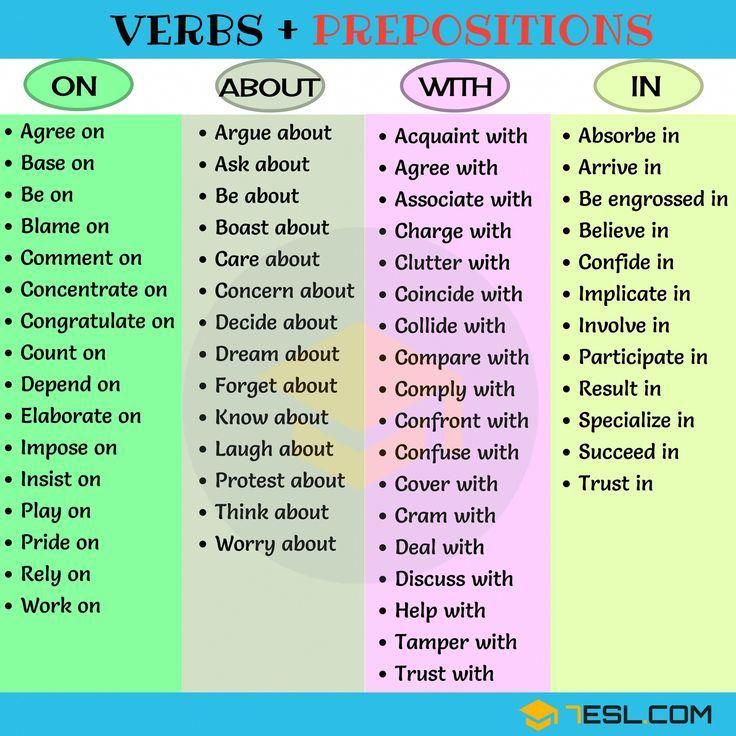
Adjectives starting with A-Z
Improve your writing with better usage of the right adjectives.
A | B | C | D | E | F | G | H | I | J | K | L | M | N | O | P | Q | R | S | T | U | V | W | X | Y | Z
How useful was this post?
Click on a star to rate it!
We are sorry that this post was not useful for you!
Let us improve this post!
Tell us how we can improve this post?
English Adjectives - Learn English for Free
In English grammar, adjectives are words that describe qualities, states of being, or quantity of nouns (e.g., “small,” “childish,” “red,” “slow,” “boring”, “thousands”). Adjectives describe and modify nouns, not verbs, adverbs, or other adjectives. Adjectives tell us how much - or how many - of something someone is talking about.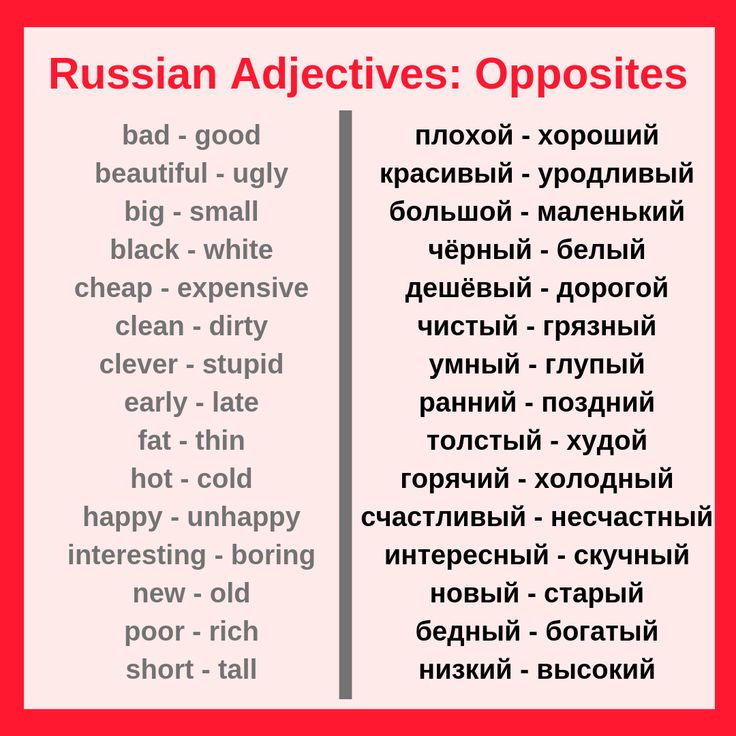 For example, My new dress is yellow and long. An adjective often comes before a noun: a short skirt, a peculiar man, an old building. And sometimes an adjective comes after a verb: My juice is sour. His presentation seemed boring. The light turned red. Learn English the most effective way and reach your language goals faster: take private English lessons or online English group classes from the comfort of your own home!
For example, My new dress is yellow and long. An adjective often comes before a noun: a short skirt, a peculiar man, an old building. And sometimes an adjective comes after a verb: My juice is sour. His presentation seemed boring. The light turned red. Learn English the most effective way and reach your language goals faster: take private English lessons or online English group classes from the comfort of your own home!
Adjectives by category
Here are how-to guides for every type of word you'll find when you learn English adjectives. Check out the dedicated categories:
Comparative adjectives compare differences between 2 nouns.
Compound adjectives are multi-word adjectives that generally appear before a noun.
Demonstrative adjectives indicate specific things.
Descriptive adjectives describe the size, color, or shape of a noun.
Present and past participles can be used as adjectives to describe characteristics and feelings.
Possessive adjectives show who owns something.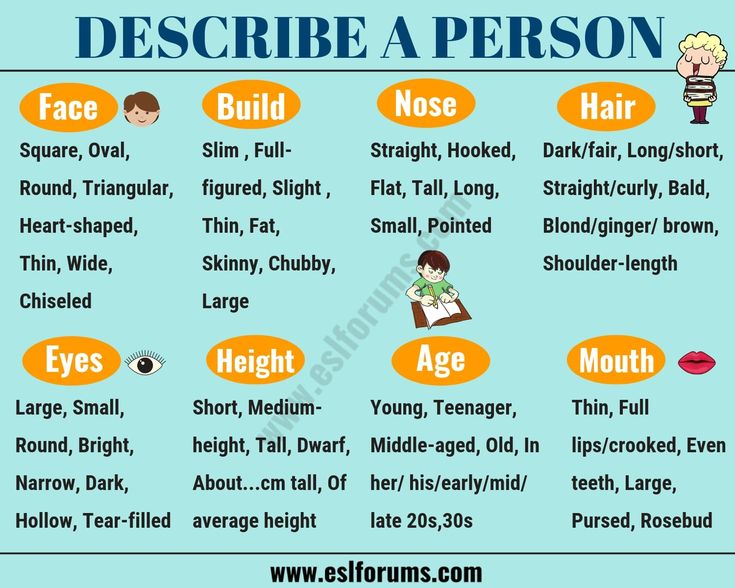
Superlative adjectives compare differences among 3 or more nouns.
Sign up to get access to a full range of English adjectives exercises
Improve your English with exercises and materials about adjectives.
Sign up now
Free resources about English Adjectives
Adjectives
2/8/2021
Article by Neha D.
Adjectives
9/27/2020
Article by Larry Jones
English
9/13/2020
Article by Larry Jones
English topics
Speaking practice
Develop fluency with everyday conversation topics
Master business English
Increase scores on IELTS, TOEFL and more
Expand your vocabulary
Learn practical words for everyday use and specialized topics
Test your English vocabulary
How many words do you know? Get an estimate in minutes with this simple test.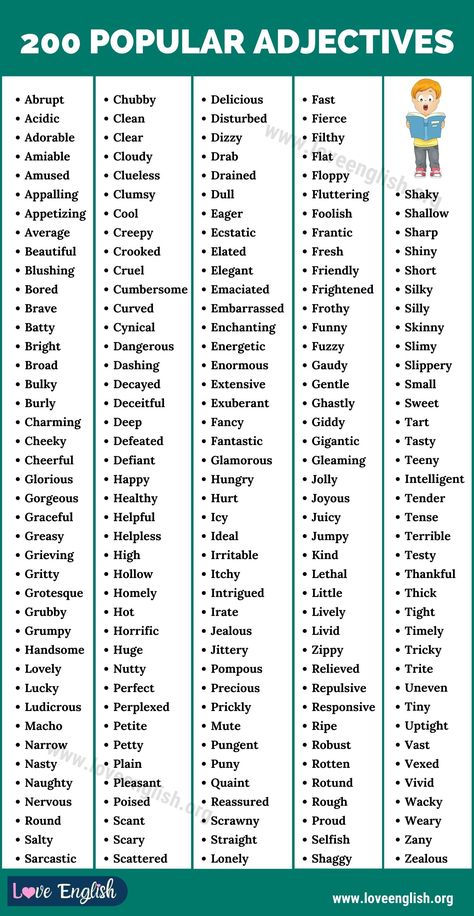
Test my Vocab
Learn English in small groups
Practice and improve in structured classes with 4-5 other students
Join group classesImprove faster with 1-on-1 lessons
Ready to speak English? Check out our tutors and start with a native English speaker.
Take 1-on-1 lessonsPreply in the press
Top publications love to feature Preply’s approach to language learning
Bernat
Aug 3, 2022
Alex is very friendly and professional. He adapts the classes based on the level, the topics of interest and on the type of class. In my case, we are doing 1 hour of speaking per week and after few classes I feel more fluent. I do recommend him! ;)
Jose Javier
Aug 3, 2022
Katie is an amazing teacher!! We contacted her to prepare us for a job interview and she gave us good materials to prepare it. She was so kind and even gave us a couple of lessons before the interview day. We are very grateful to her!
Andrea
Aug 3, 2022
I highly recommend Sana because she is a very good teacher.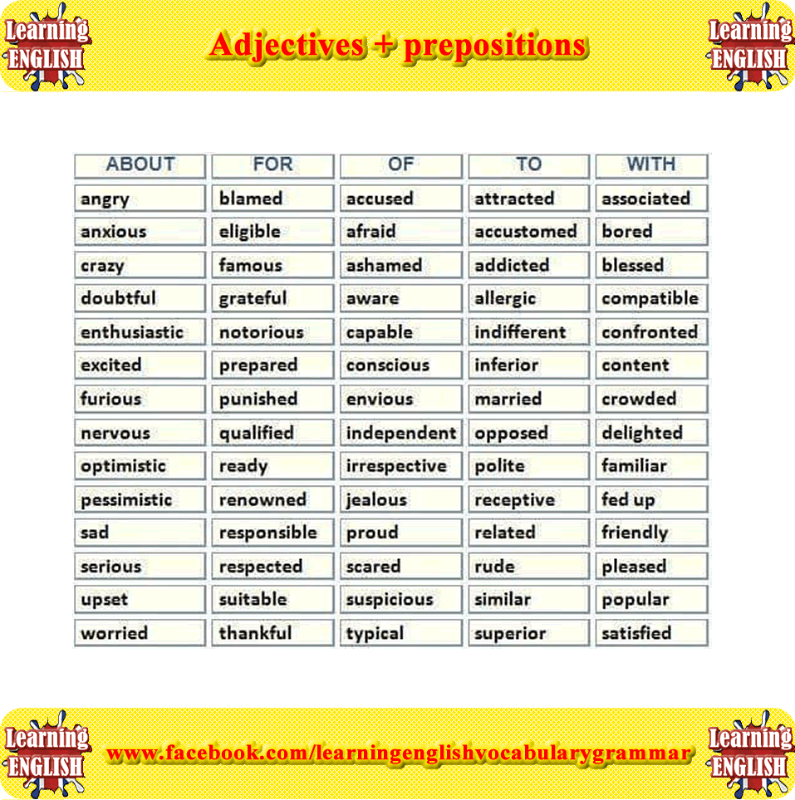 Lessons are always interesting and tailored to my needs. She is friendly, patient and she makes me feel comfortable even if I make mistakes
Lessons are always interesting and tailored to my needs. She is friendly, patient and she makes me feel comfortable even if I make mistakes
Deborah
Aug 3, 2022
My son (14 years old) absolutely enjoys the lessons with David who is an amazing teacher - my son understands him well, David is very patient, focuses on the goals of the student, and talks about interesting subjects. We definitely recommend him!
Daniel
Aug 3, 2022
Tina is an excellent teacher. She always suggests an interesting topic for our conversations and at the same time focuses on various useful grammar issues. Her lessons are for me thought-provoking and motivating.
Frequently asked questions
Here are some of the most frequently asked questions about English adjectives.
Preply uses cookies according to the settings of your browser. Detailed information can be found in the Cookies Policy
33. Methods of studying the name of an adjective in primary school.
System learning adjectives involves gradual complication and expansion material both in terms of vocabulary and and in terms of grammar.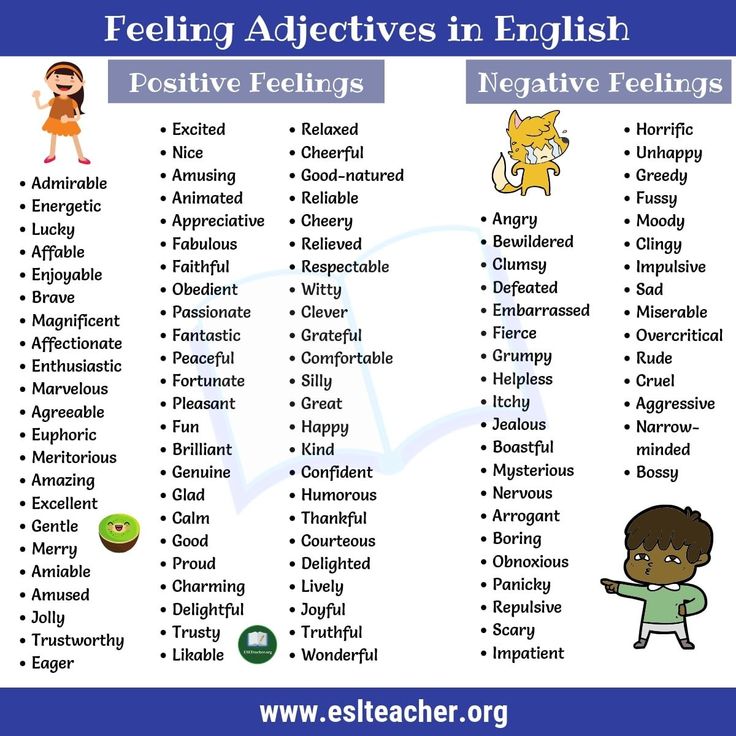 In class I students observe vocabulary the meaning of adjectives, learn What questions should be put to these words? which? which? what kind?; in the second grade are studied adjective changes by gender and numbers depending on nouns, in grade III - declension of adjectives and spelling of case endings. Simultaneously in the Russian language lessons and reading into children's speech are introduced new adjectives, the meaning is clarified previously known. Skill is being formed use them correctly in connection speech. nine0003
In class I students observe vocabulary the meaning of adjectives, learn What questions should be put to these words? which? which? what kind?; in the second grade are studied adjective changes by gender and numbers depending on nouns, in grade III - declension of adjectives and spelling of case endings. Simultaneously in the Russian language lessons and reading into children's speech are introduced new adjectives, the meaning is clarified previously known. Skill is being formed use them correctly in connection speech. nine0003
Methodology learning adjectives is conditioned, first of all, their linguistic features. Adjectives denote object sign. The essence of semantic the meaning of adjectives requires consider them in relation to nouns. Grammar signs of adjectives (gender, number, case) also depend on the name noun. Therefore, in order to understand adjectives are important from grade I direct children's attention to dependence of the adjective on noun. In class I Specifically, this is expressed in the fact that students, first, select a sign to the subject and, secondly, develop the ability connect with a question words in a sentence, i.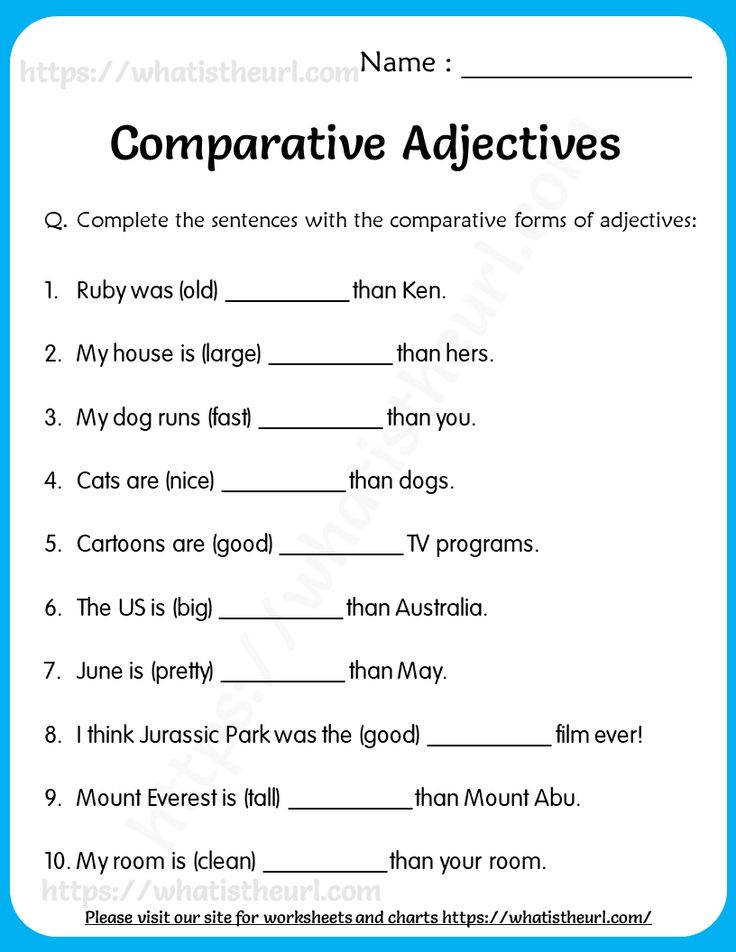 e. highlight phrases with adjectives and a noun (no term). Later, in grades II and III, this dependence is all more specifically: in what number, gender, case is a noun, in the same gender, number, case is used and an adjective. In this way, semantic-grammatical properties adjectives condition the following methodological requirement: work on adjectives should go as in plan vocabulary, and in terms of morphology and syntax. nine0003
e. highlight phrases with adjectives and a noun (no term). Later, in grades II and III, this dependence is all more specifically: in what number, gender, case is a noun, in the same gender, number, case is used and an adjective. In this way, semantic-grammatical properties adjectives condition the following methodological requirement: work on adjectives should go as in plan vocabulary, and in terms of morphology and syntax. nine0003
First stage (I class). Initial introduction to adjectives still without a term), naturally begins from observations on lexical meaning adjectives and questions they answer. Features of objects varied and can be object in terms of color, shape, size, material, purpose, accessories etc. Therefore, for the formation concepts need to be revealed this is multilateral meaning of adjectives.
correct posing questions to the words what? which? which? inherently associated with understanding the gender of nouns and adjectives and syntactic dependence of adjectives on nouns.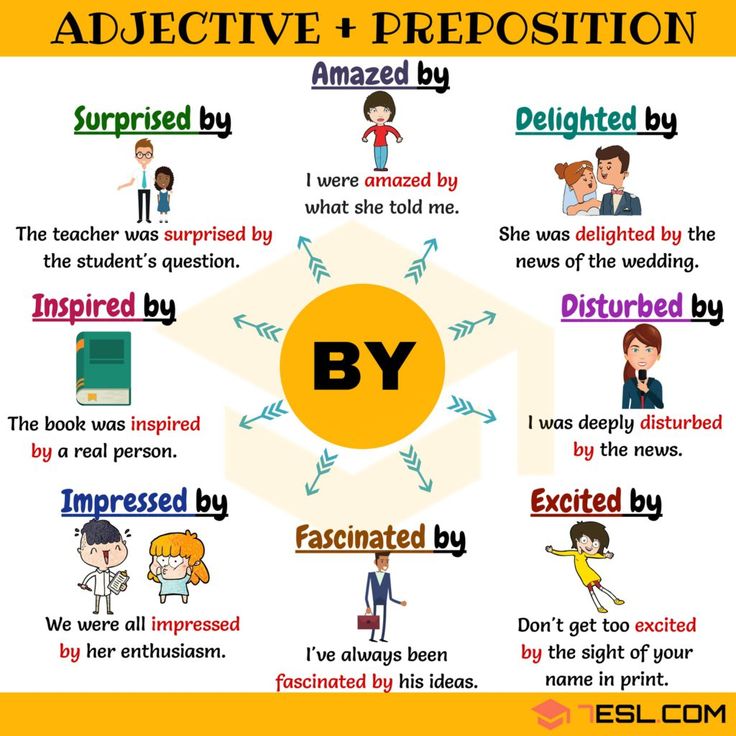 Because with category of gender, students get to know only in II grade, first graders learn to ask questions practically guided by the meaning of the words: tomato which? ripe, plum what? ripe, apple which? ripe. word recognition, answering the question what?, and words, answering questions what? which? which? (singular and plural number), it is advisable to associate with observations on the number of objects. This brings an element of awareness to student actions. nine0003
Because with category of gender, students get to know only in II grade, first graders learn to ask questions practically guided by the meaning of the words: tomato which? ripe, plum what? ripe, apple which? ripe. word recognition, answering the question what?, and words, answering questions what? which? which? (singular and plural number), it is advisable to associate with observations on the number of objects. This brings an element of awareness to student actions. nine0003
big place in the study of adjectives occupy creative works, both oral, and written: a description of the tour in forest, park, description of trees, birds, animals. Wide application in the classroom finds visibility in the form of objects, paintings, subject drawings. During observing certain phenomena. students learn to recognize signs objects and choose the exact words, naming these features. Effective are the following types of exercises:
1. Distribution of offers. nine0003
2. Recovery of deformed offers.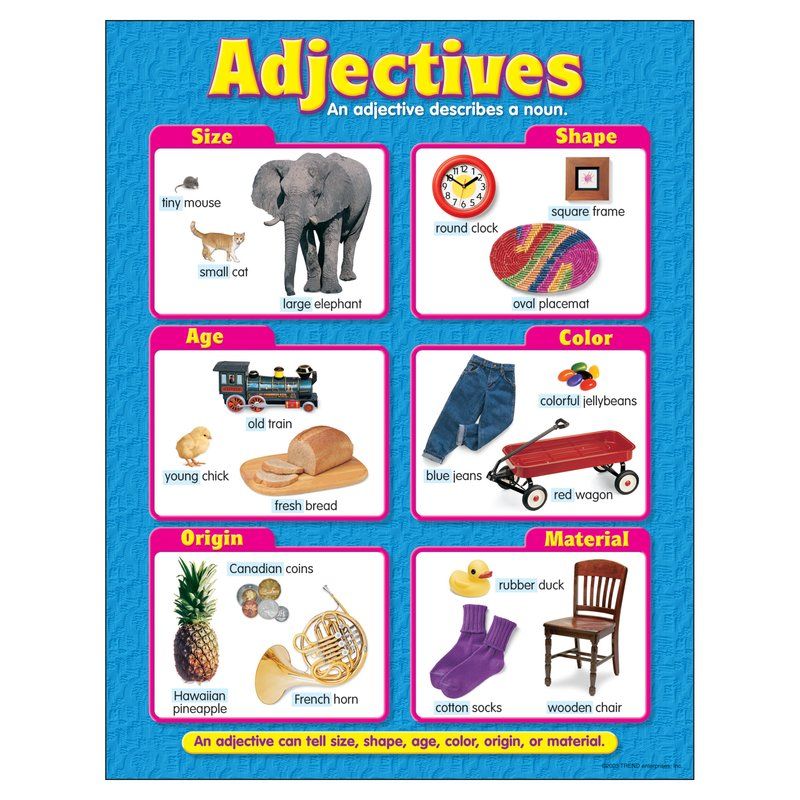
3. Making up stories from pictures base words.
Such types of exercises develop the ability to only to use words accurately, but also grammatically correct given the connection adjective with a noun.
Second stage (II class) is mainly directed to solve three problems: formation the concept of "adjective", the development ability to accurately use adjectives in speech, the formation of spelling skills generic endings of adjectives. All three tasks are solved in conjunction. nine0003
Formation the concept of "adjective" is in direct proportion to the level of mastery students of the generalized category1 "object mark". To this end words are classified denoting color, taste, smell, size, the material from which the object is made, etc. and a generalization of the features of such words. As general essential properties stand out not only lexical meanings of words, as was done in I classroom, but also characteristic grammatical peculiarities.
On based on the generalization of the properties of specific adjectives second graders distinguish indicators that are characteristic adjectives as parts of speech:
a) designate an attribute of an object,
b) answer the question what?,
in) vary by gender and number,
G) belong to nouns, together with which form phrases.
Purposeful work on the formation of this concept carried out in the process of studying the whole topics "Adjective name" (20 hours) and directly related to the development speech. Enriching children's vocabulary carried out not only through clarification of the meaning of words representing are quality adjectives, but through relative and possessive adjectives. Especially important use adjectives to observe denoting a variety of qualities people and from different sides characterizing them (sensitive, responsive, inquisitive, careful, clear-sighted, kind, industrious, etc.). Great Opportunities open for work for the teacher, if he skillfully uses the connection reading lessons and Russian language lessons. nine1.1. Adjective as a part of speech
1.2. Methods and techniques for the development of speech in the study of the name of the adjective in the 3rd grade according to the program "Primary school of the XXI century"
CHAPTER 2. EXPERIMENTAL STUDY OF THE DEVELOPMENT OF SPEECH OF YOUNGER SCHOOLCHILDREN IN RUSSIAN LESSONS WHILE STUDYING THE NAME OF THE ADJECTIVE
2.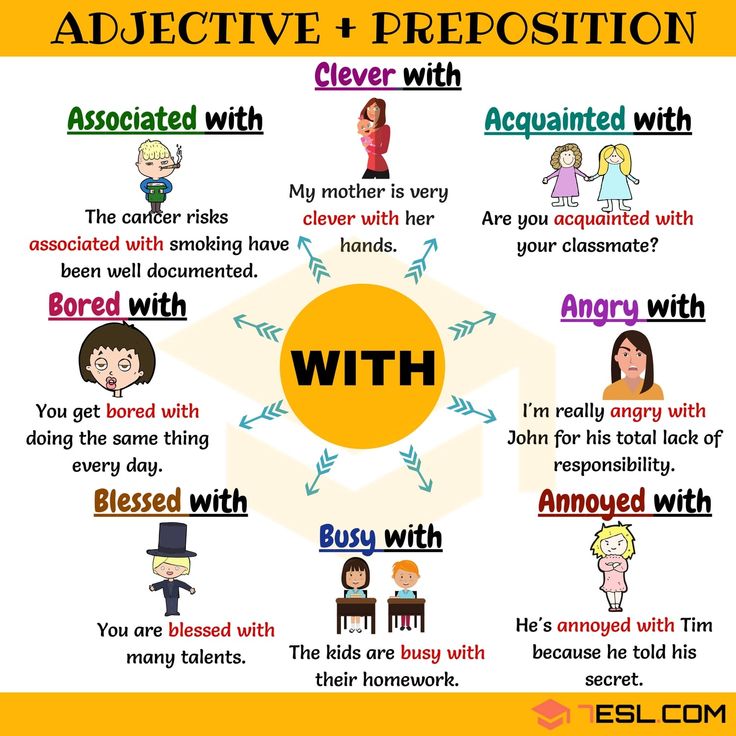 1. Organization and conduct of experimental research
1. Organization and conduct of experimental research
2.2. Analysis and interpretation of the results of the study
CONCLUSION
LIST OF USED SOURCES
Appendix
The relevance of the research topic is due to the fact that in a deep comprehensive mastery of the Russian language, increasing the efficiency of its assimilation and practical knowledge of it, strengthening the communicative orientation of training is of particular importance.
Speech develops in direct connection with the accumulation of vocabulary, mastering the structural types of phrases and sentences. These units serve both as a material and a product of coherent speech. When studying parts of speech, the student must be aware of what linguistic wealth he masters in order to express his thoughts.
The analysis of the existing methodological literature leads us to the conclusion that the content, methods and techniques are insufficiently developed, allowing to implement the complex tasks of speech development in connection with the study of the morphology of the Russian language.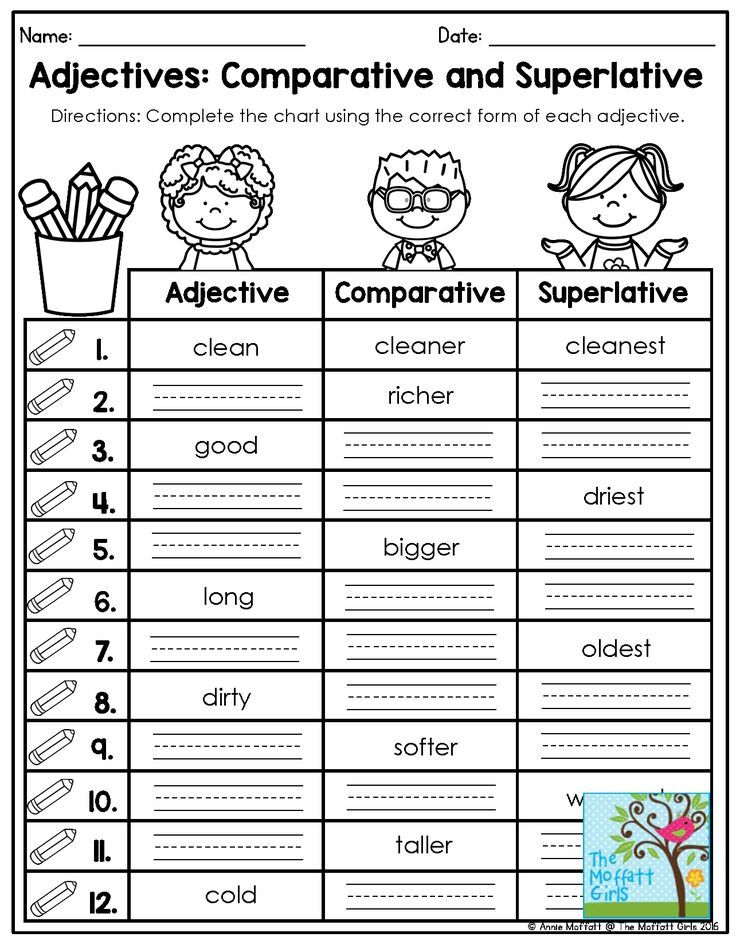 nine0003
nine0003
Approaches to solving the problem of studying morphology and adjectives, in particular, in the lessons of the Russian language, are reflected in the works of G. V. Novoselova, S. V. Zhuikov, L. V. Petlenko, N. V. Radchenko and others.
As studies of the speech of primary school students show, the adjective occupies a significant place among word usages (from 2.7% to 5.9%). The adjectives used in the speech of children are mostly qualitative, less often relative. These data indicate that the study of the name of an adjective from a grammatical position presents a certain difficulty for younger students, since in order to fully characterize a word as a morphological unit, it is necessary to abstract from its specific lexical meaning, to see in it the general categorical meaning of the feature, expressed in the features of its paradigm. . nine0003
All of the above made it possible to formulate the topic of the study: "Studying the topic "Adjective name" in elementary school.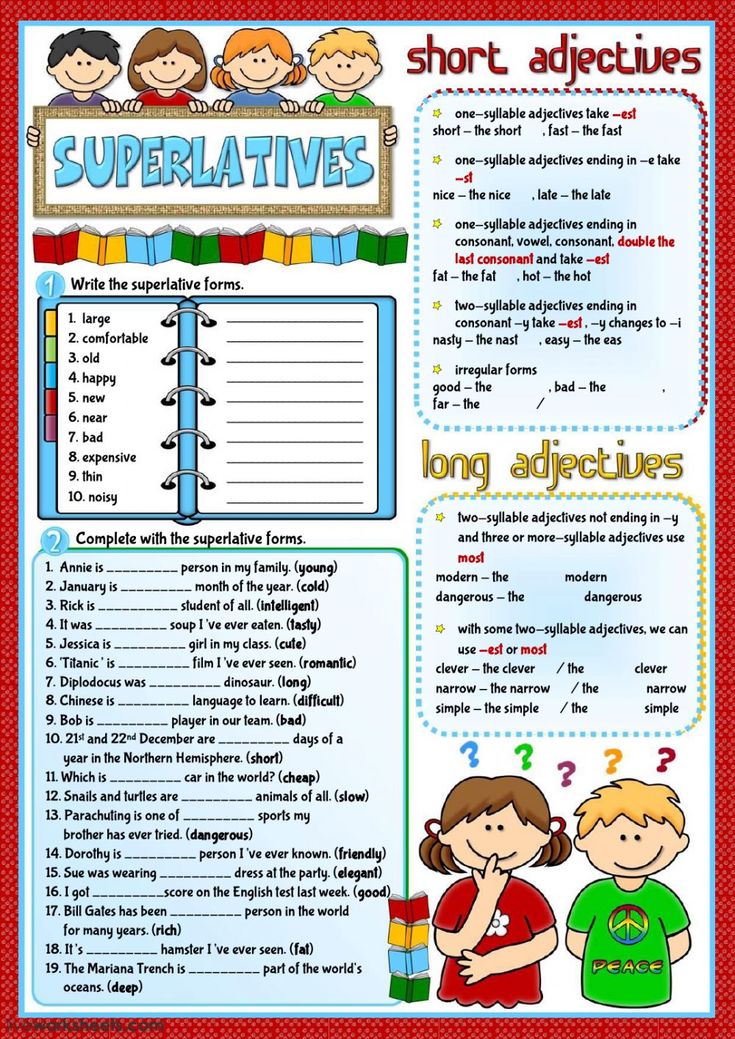 "
"
Object of study: the study of morphology in elementary school.
Subject of study: studying the topic "Adjective name" in Russian language lessons in elementary school
Purpose of study: to study the possibilities of developing the speech of younger schoolchildren in Russian language lessons when studying adjectives
Research objectives:
1. Consider the adjective as a part of speech.
2. Conduct an analysis of the teaching materials "Elementary school of the XXI century" on the development of speech in the study of the name of the adjective.
3. To conduct an experimental study of the development of speech of younger schoolchildren in the Russian language lessons when studying the name of an adjective.
Hypothesis of the study: we assume that the development of speech of younger schoolchildren in the study of the name of an adjective will be effective if:
- an observation is made over the lexical meaning of the name of an adjective denoting a sign of an object: color; the size; taste; intellectual properties and character traits; nine0003
- draws attention to difficult cases of recognizing adjectives among cognate words;
- lexical and orthographic exercises are conducted, including work with polysemantic words, synonyms, antonyms, paronyms, words in direct and figurative meaning,
- the role of adjectives in a sentence and in a descriptive text is shown, word-formation exercises are carried out.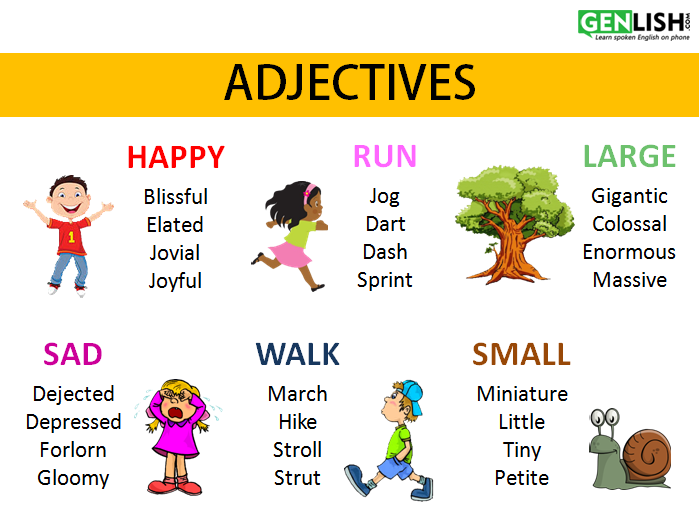
The course work consists of an introduction, two chapters, a conclusion, a list of references, an application. nine0003
1. Buneeva EV Modern textbook of the Russian language for elementary school // Primary school plus Before and After. - 2009. - No. 2. - P. 60–65.
2. Bystrova E.A. Communicative methodology in teaching the native language // Russian language at school. - 1996. - № 1. - P. 42-48
3. Wolf E. M. Grammar and semantics of the adjective. - M., 1978. - 175 p.
4. Ivanov S.V., Evdokimova A.O., Kuznetsova M.I., Petlenko L.V., Romanova V.Yu. Russian language Grade 1: Textbook for students of educational institutions: in 2 hours. Part 1, 2 - 5th ed., revised. – M.: Ventana-Graf, 2012. – 160 p. nine0003
5. Ivanov S.V., Evdokimova A.O., Kuznetsova M.I., Petlenko L.V., Romanova V.Yu. Russian language Grade 2: A textbook for students of educational institutions: in 2 hours. Part 1, 2 - 5th ed., revised. – M.: Ventana-Graf, 2012. – 160 p.
6.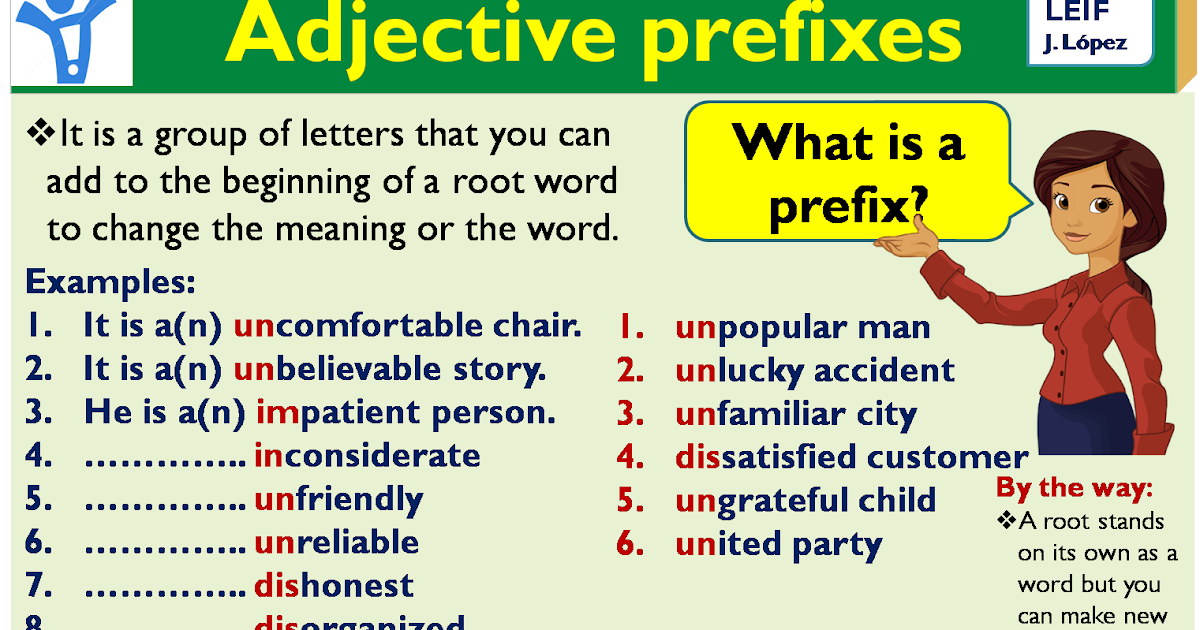 Ivanov S.V., Evdokimova A.O., Kuznetsova M.I., Petlenko L.V., Romanova V.Yu. Russian language Grade 3: Textbook for students of educational institutions: in 2 hours. Part 1, 2 - 5th ed., revised. – M.: Ventana-Graf, 2012. – 160 p.
Ivanov S.V., Evdokimova A.O., Kuznetsova M.I., Petlenko L.V., Romanova V.Yu. Russian language Grade 3: Textbook for students of educational institutions: in 2 hours. Part 1, 2 - 5th ed., revised. – M.: Ventana-Graf, 2012. – 160 p.
7. Ivanov S.V., Evdokimova A.O., Kuznetsova M.I., Petlenko L.V., Romanova V.Yu. Russian language Grade 4: Textbook for students of educational institutions: in 2 hours. Part 1, 2 - 5th ed., revised. – M.: Ventana-Graf, 2012. – 160 p. nine0003
8. Ivanov S.V. Russian language 1st grade. Comments on the lessons - M .: Ventana-Graf, 2012. - 512 p.
9. Ivanov S.V. Russian language grade 2. Comments on the lessons - M .: Ventana-Graf, 2012. - 512 p.
10. Ivanov S.V. Russian language grade 3. Comments on the lessons - M .: Ventana-Graf, 2012. - 459 p.
11. Ivanov S.V. Russian language grade 3. Comments on the lessons - M .: Ventana-Graf, 2012. - 377 p.
12. Ippolitova N.A. Text in the system of teaching Russian at school.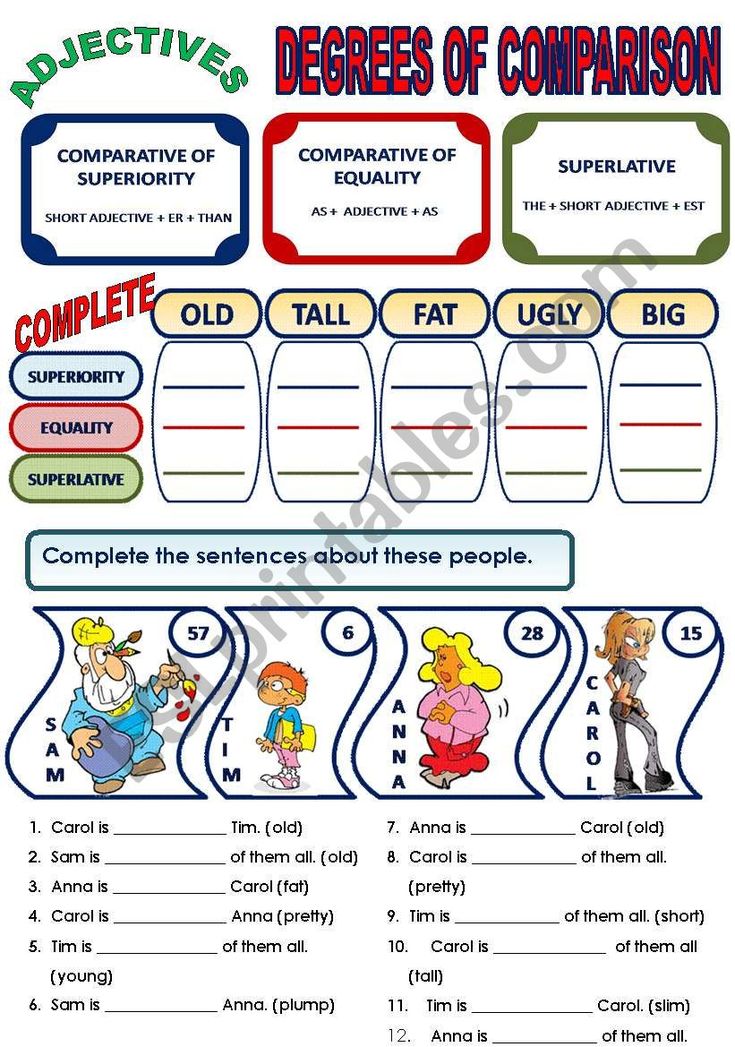 – M., 1998. - 126 p.
– M., 1998. - 126 p.
13. Kapinos VI Methods of speech development in the Russian language lessons / ed. T. A. Ladyzhenskaya. - M.: Enlightenment, 1997. - 334 p.
14. Klimova Yu.A. Russian adjectives: an attributive picture of the world // Proceedings of the Russian State Pedagogical University. A.I. Herzen. - 2008. - No. 69. - P.122-127.
15. Kolesov VV Language and mentality. - St. Petersburg, 2004. - 314 p.
16. Kuznetsova MI We write competently: grades 1-4: Workbooks No. 1, 2 for students of educational institutions. - 2nd ed., Rev. - M .: Ventana-Graf, 2012 - 48 from
17. Kuznetsova MI Learning to write without mistakes: A workbook for students in grades 1-4 of educational institutions. - 2nd ed., revised. – M.: Ventana-Graf, 2010. – 96 p.
18. Leontiev A.A. Fundamentals of psycholinguistics. – M.: Meaning, 1999. – 287 p.
19. Luria A.R. Writing and speech: neurolinguistic research: textbook. allowance for students. universities - M.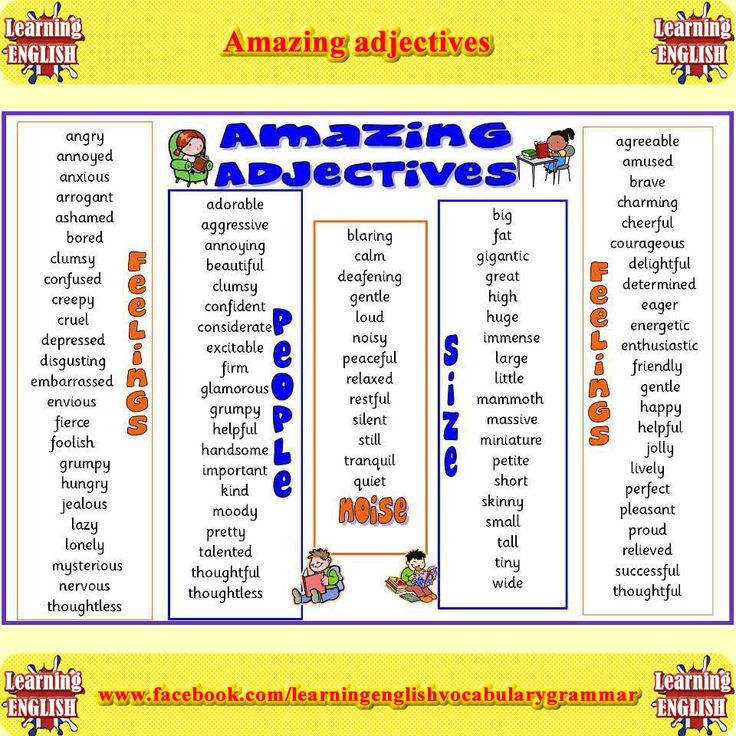 : Academy, 2002. - 346 p.
: Academy, 2002. - 346 p.
20. Lvov M.R., Goretsky V.G., Sosnovskaya O.V. Methods of teaching the Russian language in primary grades - M .: Academy, 2007. - 464 p. nine0003
21. Lvov M.R., Ramzaeva T.G., Svetlovskaya N.N. Methods of teaching the Russian language in elementary grades. 2nd ed., revised. - M., 1987. - S. 180–183
22. Pedagogy / ed. V.A. Slastenin. – М., 2004. – С. N.F. Vinogradov. – M.: Ventana-Graff, 2003. – 144 p.
24. Developing language education in modern elementary school / ed. T.G. Ramzaeva. St. Petersburg: Special Literature, 2009. – 196 p.
25. Ramzaeva T.G. Methodology of the Russian language as a science. - Vologda: Vologda State Pedagogical University, 2003. - 345 p.
26. Ramzaeva T.G. Russian language. Grades 1-4: program for educational institutions. – M.: Drofa, 2006. 4–7 p.
27. Russian language: Proc. for stud. higher ped. textbook institutions / L.L. Kasatkin, E.V. Klobukov, L.P. Krysin and others; ed. L.